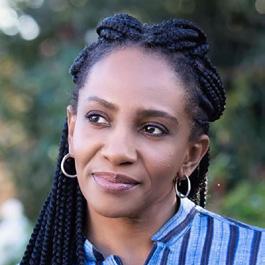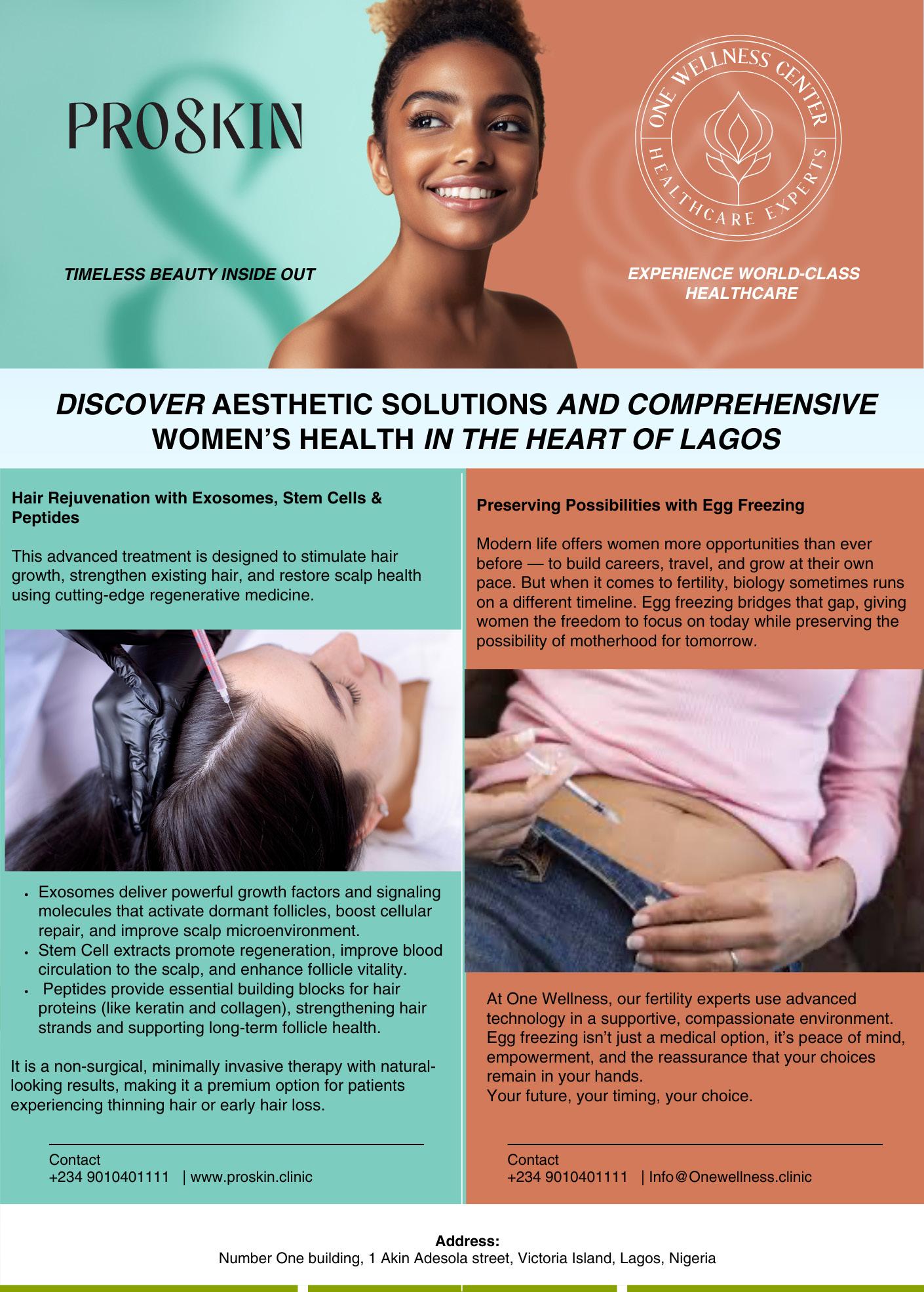
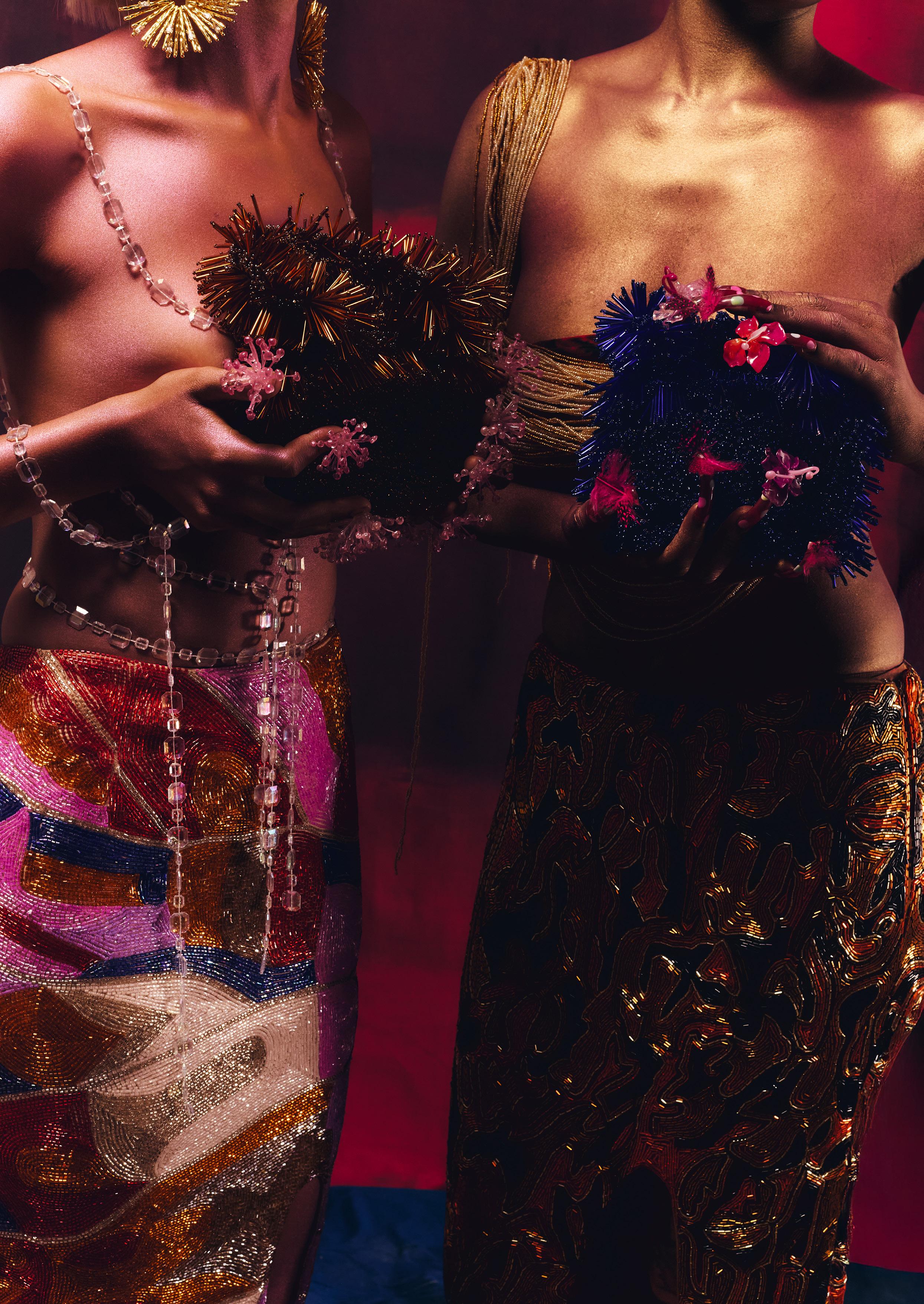

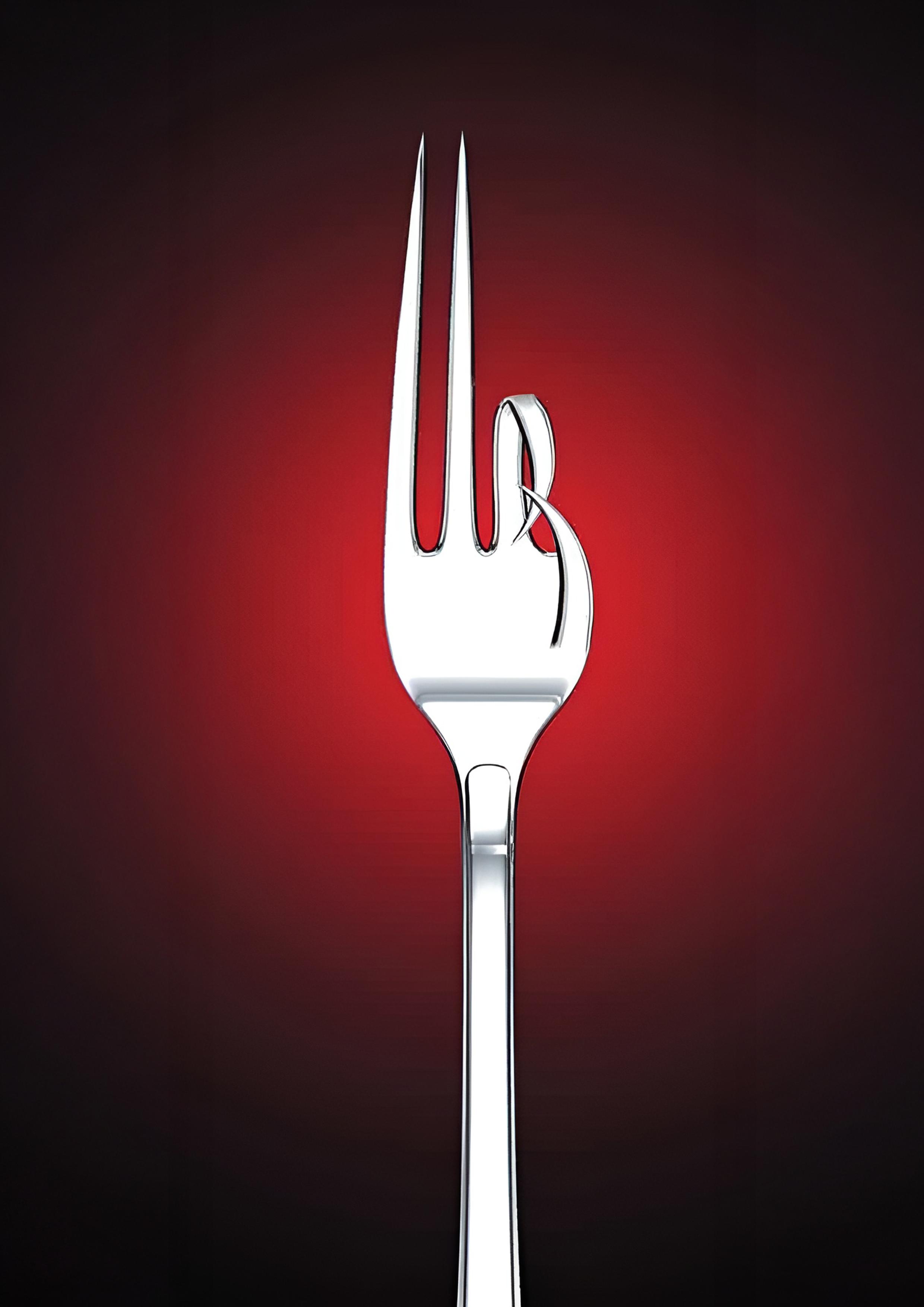







Editor’s Note
Featured Column: Fitting isn’t Fitting
Intervview Nkwo Onwuka
Interview Cynthia Abila
Maestro
Interview Lakin Ogunbanwo
Lakowe Lakes


Elvis Osifo Editor-in-Chief, Lost in Lagos Plus Magazine IG: @edowtf













Editor’s Note
Featured Column: Fitting isn’t Fitting
Intervview Nkwo Onwuka
Interview Cynthia Abila
Maestro
Interview Lakin Ogunbanwo
Lakowe Lakes


Elvis Osifo Editor-in-Chief, Lost in Lagos Plus Magazine IG: @edowtf

What truly is “African” in fashion today?
This is the question that beats at the heart of our Fashion Issue. It is a question that is both celebratory because of our fast global rise in the past few years and urgent because the demand for “African” is higher than ever before.
In a bid to match global consumption, there are now several interpretations and influences, resulting in a lot of diffusion and blurred lines. So we had to ask. What, truly, should be non-negotiable in the identity we export to the world? “Ancestral Glamour” is our attempt to document, to celebrate, and to canonise. It is a gathering of some of the architects, designers, muses, journalists, business minds, and artisans who together have given African fashion its voice and silhouette.
In this issue, Cynthia Abila sees African fashion as a dialogue between heritage and modernity, while Dr Akin Faminu champions aiming to dismantle misconceptions about African Fashion’s lack of refined quality. Ejiro Amos Tafiri celebrates the modern African woman, whereas Lakin Ogunbanwo questions the very existence of a singular “African fashion,” emphasising individual expression and the maker’s identity. Michelle Adepoju fiercely protects cultural stories, centring culture first and working
directly with artisans, contrasting with Mark Odiete, who sees African fashion as a “cultural archive in motion” and a way to make culture “unapologetically cool again.” Nicolas Abdullahi defines African fashion by its storytelling power, emphasising intentionality, craftsmanship, and respect for cultural elements, while Nonye Udeogu views African fashion as a cultural export from Africa, highlighting authenticity and integrity as non-negotiables. Nkwo Onwuka sees African fashion as a form of activism, amplifying a positive story of Africa through sustainable practices and community building, and Vincent Desmond insists that African fashion is about systems, politics, and people, with Africans themselves remaining central to its definition. Don’t forget to check out our list of Top 10 Underground Nigerian Fashion Designers, and our list of the top 5 events in Nigeria.
I do not claim to offer final answers in these pages. Instead, I offer provocations. I invite you into the conversation. For the answers live in the features, in the stories, in the custodians we spotlight and in you, our dearest reader, as you engage with them.
#DiscoverNigeria #ExperienceNigeria #LostinLagosPlus #LostinLagosPlusMagazine
LOST IN LAGOS Volume 10.1 October 2025 Title: Ancestral Glamour FOUNDER Tannaz Bahnam PUBLISHED BY Knock Knock Lifestyle Solutions Ltd PRINTER Tee Digital Press EDITOR-IN-CHIEF Elvis Osifo EDITOR Leon Izegbu DESIGN Ernest Igbes CONTRIBUTORS Elvis Osifo, Mona Zutshi Opubor, Leon Izegbu, Ernest Igbes, Enemona Udile, Matildah, Kayinsola Onalaja, Michelle Adepoju, Lakin Ogunbanwo, Nicolas Abdullahi, Vincent Desmond, Mark Odiete, Nkwo Onwuka, Dr Akin Faminu, Ejiro Amos Tafiri, Nonye Udeogu, Cynthia Abila, Jenny Onibode, Omobolaji Wuraola Quadri, Senami Morris, Efayy, Ayodele Boluwatife Joy, Chef Mendal, Ridwannsalam COVERS Front Cover: Onalaja Inside Cover: NKWO


Every month, three products are selected from businesses in Nigeria and shared with you to appeal to your senses. They range from cool, functional items that become indispensable and intimate items that make for thoughtful gifts, to artefacts you can splurge on and everything in between. Discover the key style upgrades this month that turn everyday living into a statement.
There’s pepper and then there’s hot pepper. This slip-on mule is glossy, striking, and impossible to ignore. The sculpted sole ensures all-day comfort, while the squared toe and playful bone detail add a touch of avant-garde sophistication. Minimalist, openback, and effortlessly powerful, Atarodo isn’t just footwear; it’s a statement. Step in, turn heads, and let your energy do the talking
Some pieces are more than accessories; they are stories you can wear. The Ere Necklace takes its name from the Yoruba word for sculpture, and that spirit shines in its bold yet elegant form. With glossy gold plating and a sculptural silhouette, it balances strength and softness in a way that feels modern and timeless. Versatile for everyday, yet striking enough to be the finishing touch when you want to make an impression. In Yoruba, this is Éwà (beauty).


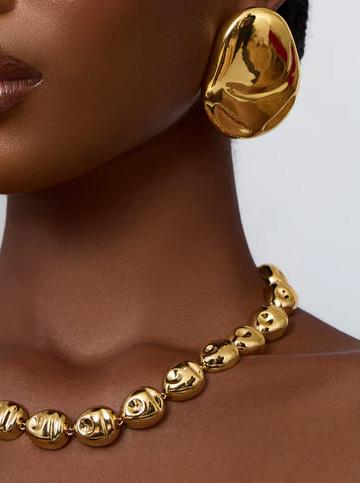

A BIT ABOUT ME:
Curated with intention. Nothing announces authority more clearly than a bossiest croc-skin bag. The DKTB-01 Tote bag, crafted in rich blue crocodile-patterned leather, is structured, polished, and spacious. With smart compartments, plus snap and zip closures, it balances style with function. Bold, commanding, and unapologetically stylish. This is the bag that makes every outing a power move.


I’m a 20-something-year-old living in Nigeria, so you know I’m constantly tired. I spend way too much time obsessing over self-care, food, tech, and anything else that makes my life easier, making me your perfect plug for anything! Like most people, I find randomly shopping online at odd hours therapeutic, so much so that if you look into your mirror and say “retail therapy” three times, I will appear.


Featured Columnist
Mona Zutshi Opubor
Ibought the trousers in 2009, when I happened to be training for a triathlon. Once I crossed the finish line and no longer exercised twice daily, the pants stopped fitting, but I didn’t get rid of them.
In 2024, after neglecting myself all summer, I lost weight. I went through my drawers in search of clothes I could wear to my job as a teacher and found the old trousers. I managed to yank them on and, with great effort, fasten the button. There was a lot of flesh that I didn’t remember being part of the process, and they fit more like a sausage casing than the cool capris I remembered. Still, I felt cocky to be back in my old gear.
That day, the school provided lunch for the staff. A sporty athletic coach was ahead of
me in line, taking small portions of salad.
I served myself a mountain of cheesy pasta, as if I had just engaged in manual labor, not sat through a presentation on safeguarding children. “Live a little,” I told the coach. “What’s the harm in a big lunch?”
In the afternoon, I left the building, knowing I had killed it. Let’s face it. I was a hottie. Mona was back, better than ever. As I slid into my car, I heard a loud rip. I felt cold, as if my naked flesh was now pressed against leather upholstery. I realized my pants had split open, and my bottom was fully exposed. It was like being the Incredible Hulk–from an apparel perspective–without the superpowers or heroism.
I was mortified. If this had happened during the school day, my colleagues would have seen parts of me that gravity has mistreated. Fitting into my old pants made me forget my transition from sexy beast to auntie.
As is my habit, I processed this data in a way that made me the victim of cruel forces beyond my control. When my eldest came home to visit, I explained my new reality. “I am in menopause,” I told her. “This means that my clothes no longer have the power to contain me. I will now wear pants with elastic waistbands and blouses that make me look like a cocaine cowboy. It’s part of the natural aging process.”
My daughter is extremely intelligent, and



she cocked her head, studying me in a way I did not care for. “Don’t you have your period right now?” she asked.
“I don’t see how that’s relevant,” I said.
“If a woman menstruates every month, she’s not in menopause. Is it possible your clothes don’t fit because you’re sedentary, and you just ate four bags of chocolate by yourself?”
I was outraged. I didn’t have children, so they would make me a better person. I birthed them—painfully, I might add—so
they would support my delusions.
My daughter poked at her phone. “Look, here’s a study in a medical journal that says women your age have a greater need for protein. They eat to excess to meet that need, so they gain weight, but it’s not inevitable. Just opt for more meat and veggies and less candy.”
I stood there for a while, trying to think of a snappy retort but nothing occurred to me.
Once she travelled back to university,
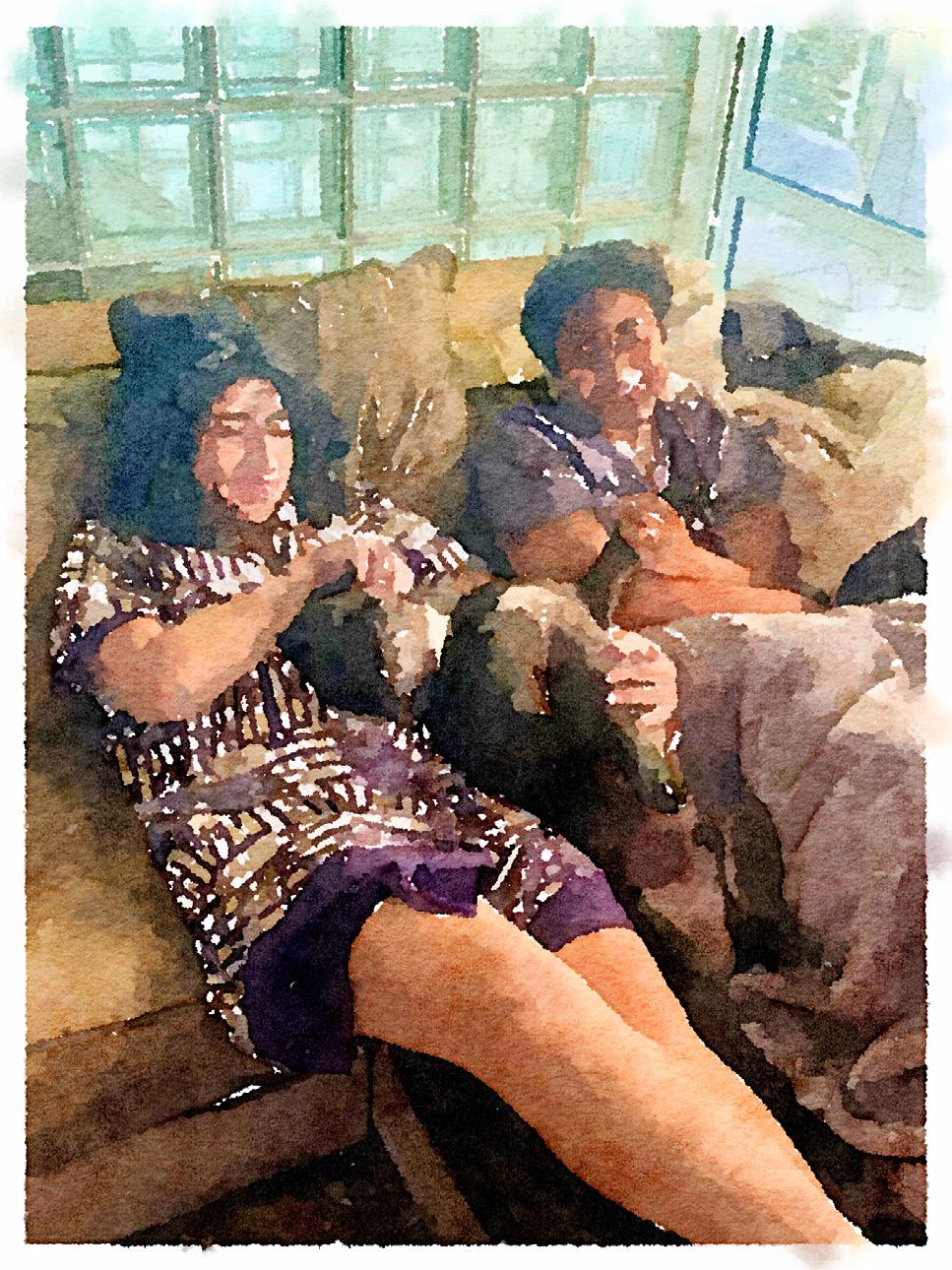


Mona Zutshi Opubor is an Indian-American and Nigerian writer. She holds an MSt in Literature and Arts from the University of Oxford, an MA in Creative Writing from Boston University and a BA in English Literature from Columbia University.
Read more at www.monazutshiopubor.com
I went to my favourite Lagos tailor and asked him to make me loose dresses to accommodate my girth. I described a design of my own invention that was the rough approximation of a potato sack. “Do you know that middle-aged women suddenly expand, and there’s no stopping it? It’s a complicated biological process, and the only solution is to buy a new wardrobe.” Because the tailor was interested in taking my money, not developing my character, he nodded at all the right places, and we both felt like winners.

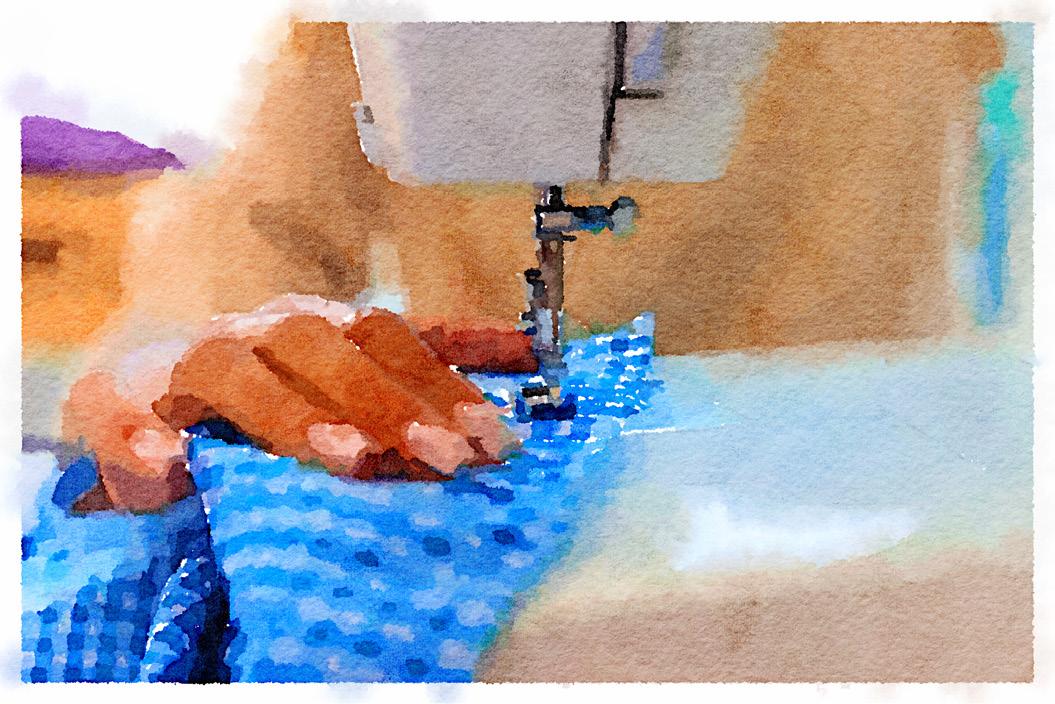



By Elvis Dante Osifo Editor in Chief, Lost in Lagos Plus Magazine

Maestro has cemented its place as Nigeria’s leading multi-brand fashion destination, a standard-bearer for upscale retail that rivals its global counterparts. With four branches across the country, it is fast becoming Africa’s own interpretation of the international fashion experience.
A step into Maestro at Palms Mall, Lekki, instantly evokes the sophistication of Milan’s Via Montenapoleone or Paris’s Avenue Montaigne. The atmosphere blends polish and exclusivity, yet welcoming enough to invite discovery. Here, international fashion finds its voice in Nigeria, curated with precision for a discerning audience that demands both authenticity and style.
The Maestro story began with a singular vision to serve the modern Nigerian man with head-to-toe refinement. Despite starting off as a men-only concept, the brand has evolved into the country’s definitive address for premium menswear; because fashion, like culture, is alive and ever-expanding. So, responding to demand, Maestro has grown to embrace women’s apparel and accessories, signaling its commitment to inclusivity while maintaining the air of exclusivity that defines its identity. This evolution is fortified by Maestro’s rare distinction as the official franchise partner for some of the most revered names in global fashion: BOSS, Michael Kors, Emporio Armani, Karl Lagerfeld, Hackett, Paul & Shark, Harmont & Blaine, and more.
Walking through the different sections is when the jaws really drop. At BOSS, you are met with the epitome of German precision in tailoring:


pieces that balance contemporary minimalism with enduring authority. Michael Kors, on the other hand, offers a distinctly American interpretation of cosmopolitan ease, where timeless readyto-wear pieces and silhouettes meet subtle glamour. Emporio Armani injects Italian sophistication into the mix, presenting streamlined cuts, refined palettes, and designs that carry Giorgio Armani’s signature of quiet power.
Just across, Karl Lagerfeld brings boldness and modernity into play. His collections, with their Parisian chic infused with rock-edge attitude, reflect the late designer’s iconic personal style. Hackett, by contrast, grounds itself in quintessentially British sensibilities: heritage, sportsmanship, and timelessness, for the man who lives between tradition and elevation. Paul & Shark represents another dimension entirely, and also a personal fave. Run your hands through the display array and you can feel the cashmere, ultra-fine linen and technically innovative fabrics. Its roots in the nautical lifestyle is a joy to the eyes and skin, as the collections are infused with a sense of adventure, elegance, and resilience against the elements. So you know it’s highly durable. Another durable ensemble is Harmont & Blaine, which delivers a playful and light sophistication. A favourite thing about the way it is displayed at Maestro is how the brand’s dachshund logo and Mediterranean spirit is instantly seen and felt.
Maestro is more than a gallery of illustrious labels. It is an experience curated for those who understand that premium fashion is as much about how it feels as how it looks. The staff function less as salespeople



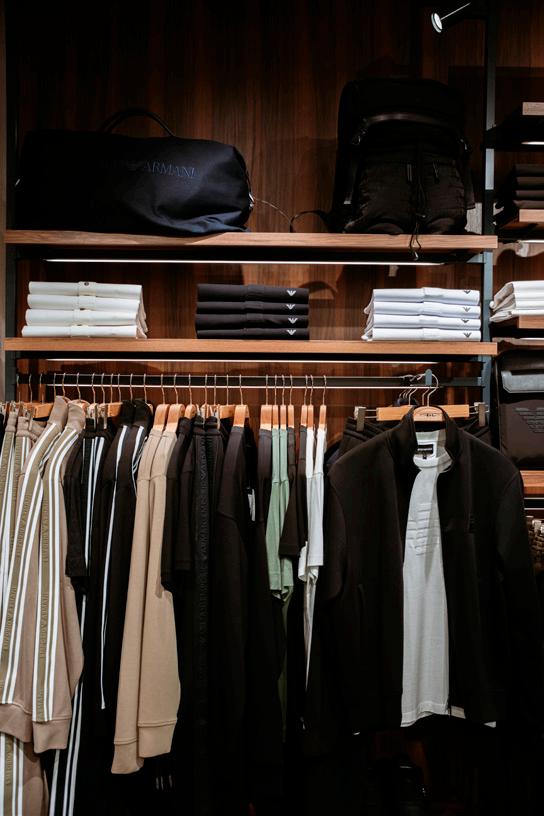
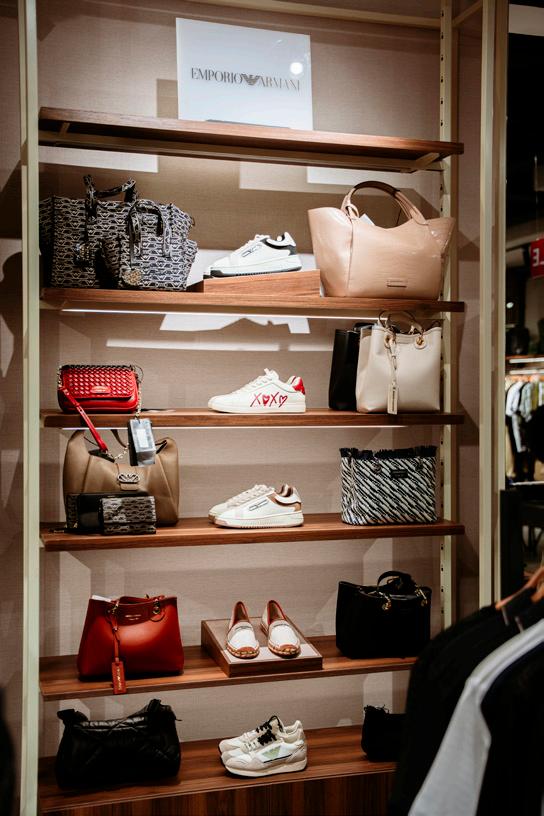

and more as stylists, guiding clients through collections with the attentiveness of personal consultants. Every interaction is tailored, every purchase elevated by service that mirrors global standards yet feels distinctly Nigerian in its warmth. From accessories to footwear, from seasonal arrivals to exclusive edits, Maestro has created an environment in Palms Mall where fashion meets global culture immersion. And as the brand continues to expand, the anticipation builds as something great is underway, as Diesel is next to join the fold. Soon, Lagos will experience Diesel’s full
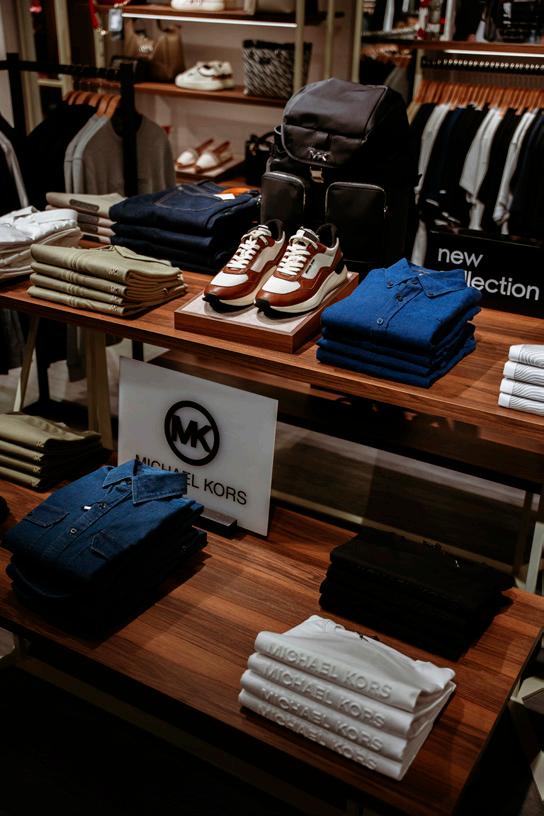


offering for both men and women: denim redefined, accessories imbued with attitude, and a complete wardrobe that celebrates Eko’s individuality with Italian edge.
Maestro +234 809 555 5022 www.maestroshops.com IG: @maestro.nigeria

Interview Lakin Ogunbanwo Artist and Photographer
Meet Lakin Ogunbanwo, a Nigerian Artist/ Photographer whose practice has evolved from photography to a multi-disciplinary approach, incorporating collage and writing. While rooted in a photographic practice he describes as a “hunt for beauty,” his current work involves deconstructing his own photographs to create new layered collages. This process allows him to pull apart and rebuild his captured images, offering new interpretations. He has also turned to writing as a complementary practice, viewing it as a medium that forces honesty and a “different kind of exposure.”


What does ‘African’ fashion mean to you?
Honestly, I am not sure ‘African fashion’ exists, at least not in the way denim feels American or tartan feels British. Across the continent, people dress with so much individuality it’s hard to pin down or box into a single aesthetic (ironically, for a culture rooted in community). Maybe the most African thing about African fashion is the maker.
You often employ a subversive tone in your photography. How do you use this approach to challenge and dismantle monolithic or outdated Western perceptions of African identity?
That subversive tone was never a strategy; it was instinct. I held on to my own idea of beauty, fed by culture and my immediate reality, but always mine. Africans aren’t one thing. Nigerians aren’t one thing. My work quietly insists: I am just one of many ways to be.
As your work gained international acclaim, have you ever faced pressure to make your vision more ‘digestible’ or exotic for a non-African audience? How do you resist that?
Not
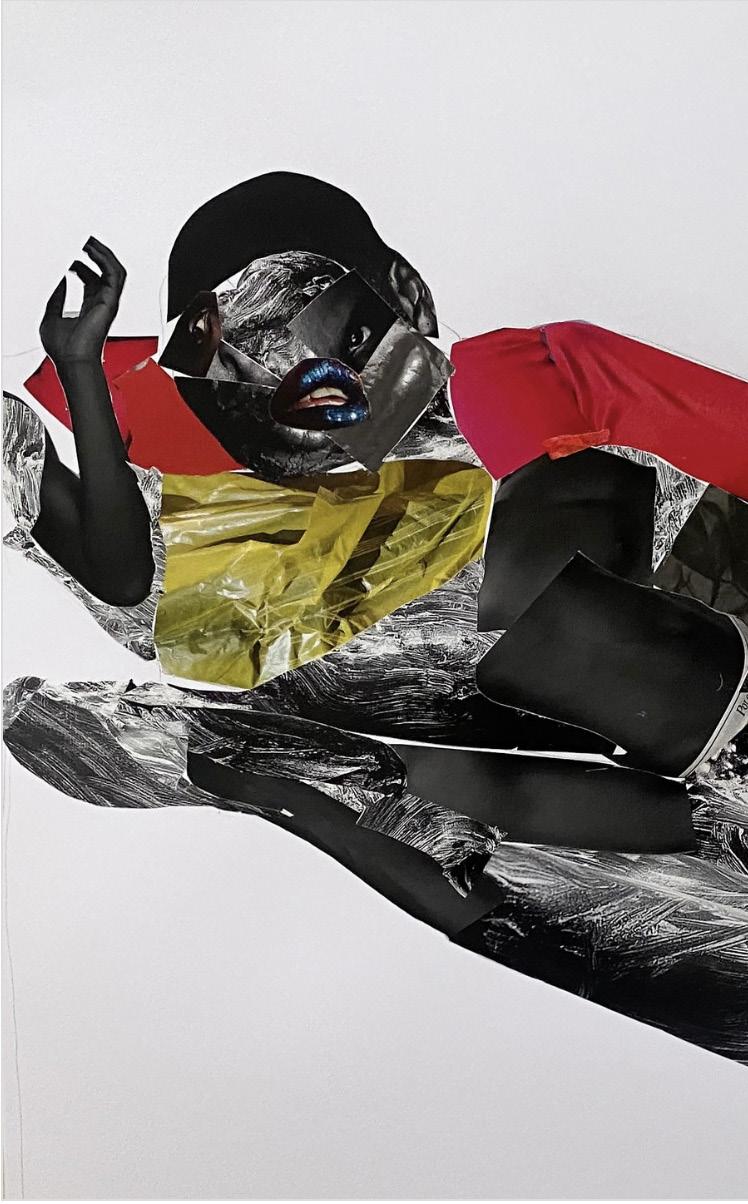
travels freely now. But power matters. If a Nigerian shows adire and it’s ignored, then a big fashion house shows the same fabric and it’s hailed as an invention, that’s when it becomes appropriation. Appreciation only works when it’s in reference (not direct copying) and not a performance.
‘‘
I don’t fully buy the idea of cultural appropriation, because inspiration travels freely now. But power matters.
exactly to be ‘digestible’, but once the audience grew, I started bringing them into the studio in my head. What began as a playful search for beauty started to feel slightly haunted by their gaze. I’ve stepped back from commercial work, a pause from photography to rebuild the curiosity that started all this.
What does the term ‘cultural appropriation’ signify to you as a creator? What is the fundamental difference between appropriation and genuine appreciation in global fashion?
I don’t fully buy the idea of cultural appropriation, because inspiration

Beyond the style and the composition, what is the core feeling or undeniable truth about modern Nigerian identity that you want your audience to walk away with after seeing your work?
I struggle to define Nigerian identity. Nigeria is the soil from which the work grows, but what I really want is for a viewer (Nigerian or not) to catch a glimpse of themselves. What you’re really seeing is how THIS Nigerian me, exists and processes the world. The work is the evidence.

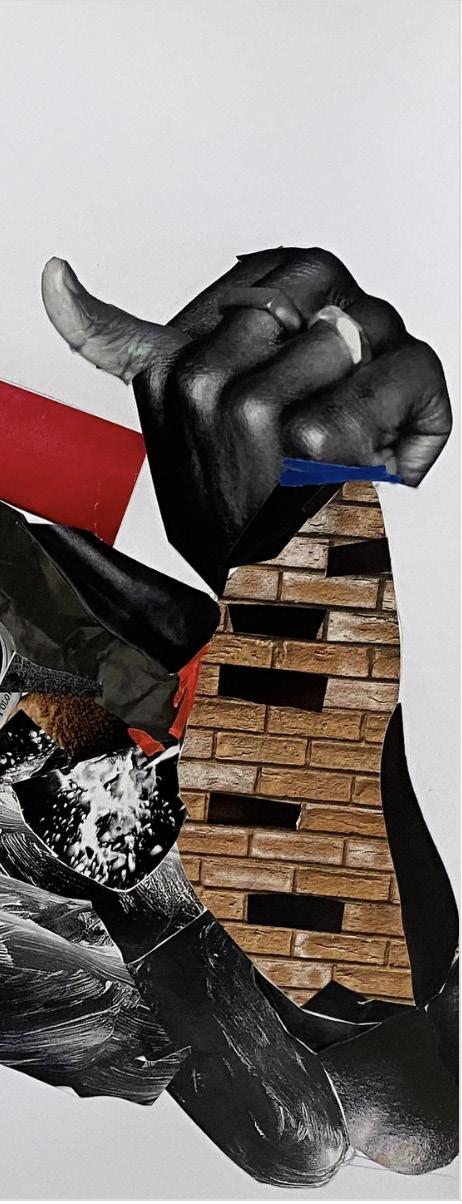

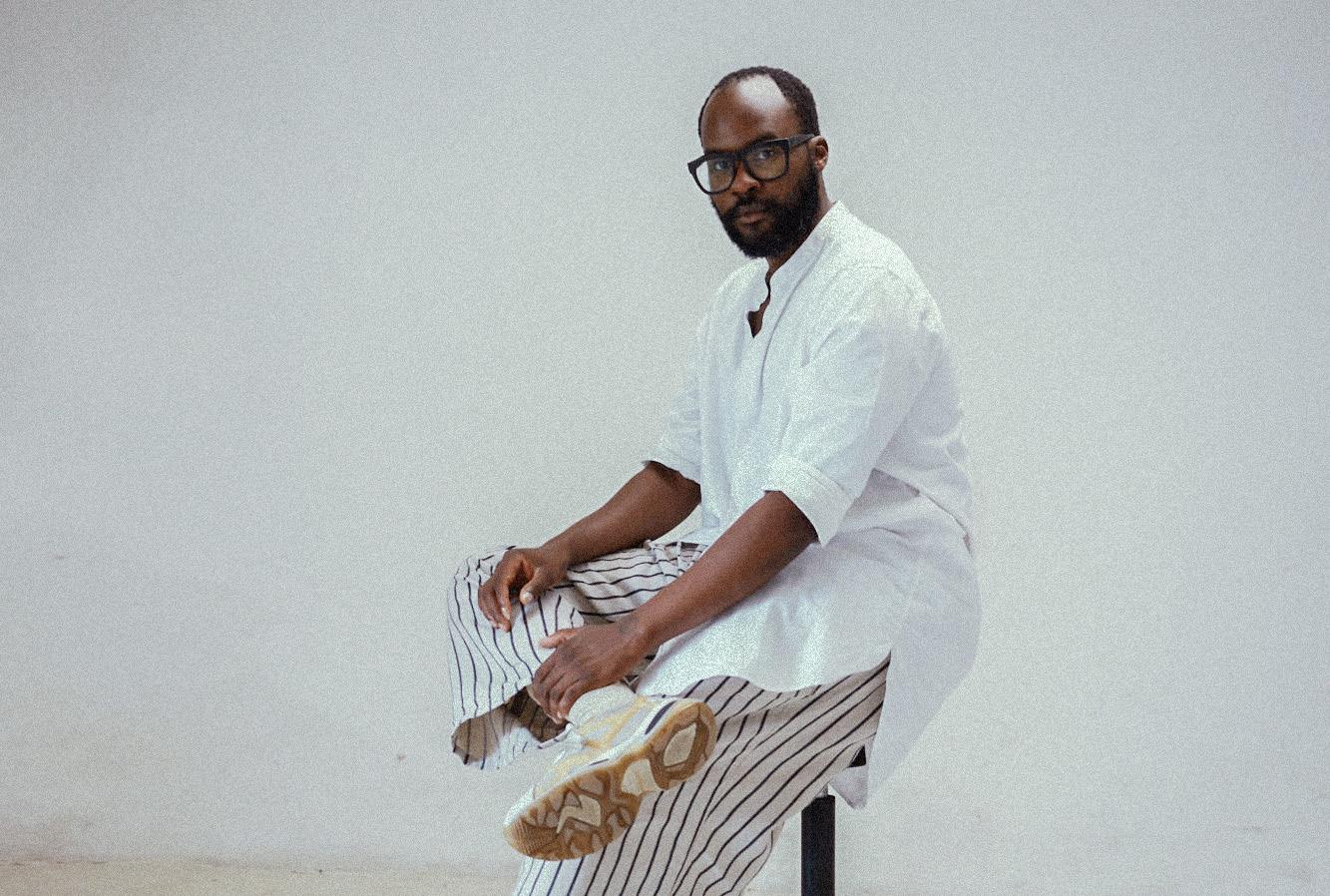




Meet Nicolas Abdullahi, a fashion stylist and designer who believes that every outfit should tell a story. With over four years in the industry, his passion is merging cultural heritage with contemporary fashion. He doesn’t just put clothes together; he curates experiences and builds narratives that are a true reflection of identity and emotion.

What, to you, defines African fashion: the prints, the fabrics, the silhouettes, or the stories we tell?
Our textiles carry history, our silhouettes are bold and unapologetic, and our designs always speak of identity, resilience, and pride. For me, African fashion is defined by its storytelling power: you are witnessing memory, history, and identity being woven into something living. Whether it is through a luxurious lace fabric, Adire, Aso-Oke, Ankara, or modern tailoring, everything carries meaning, and that is what makes it so special. African fashion cannot be pinned down to one element; it is a dialogue between prints, fabrics, silhouettes, and above all, the stories. What defines it for me is intentional storytelling through design.
What are your non-negotiables when it comes to African fashion?

Simplicity, Authenticity, craftsmanship, and respect.
Authenticity means designs should feel true to their roots, even when modernised. Craftsmanship is non-negotiable: the finishing and detail must be world-class, and the artistry of our tailors, beaders, and weavers must be impeccable.
Then there is respect. We must be intentional about how we use cultural elements, ensuring they are not watered down or reduced to mere trends. African fashion carries weight, and that weight should always be honoured.
We rarely hear of stylists being included in runway shows in Nigeria, unlike makeup and hair. Are fashion stylists ever brought in, and if so, at what stage?
That is an important question. In Nigeria,


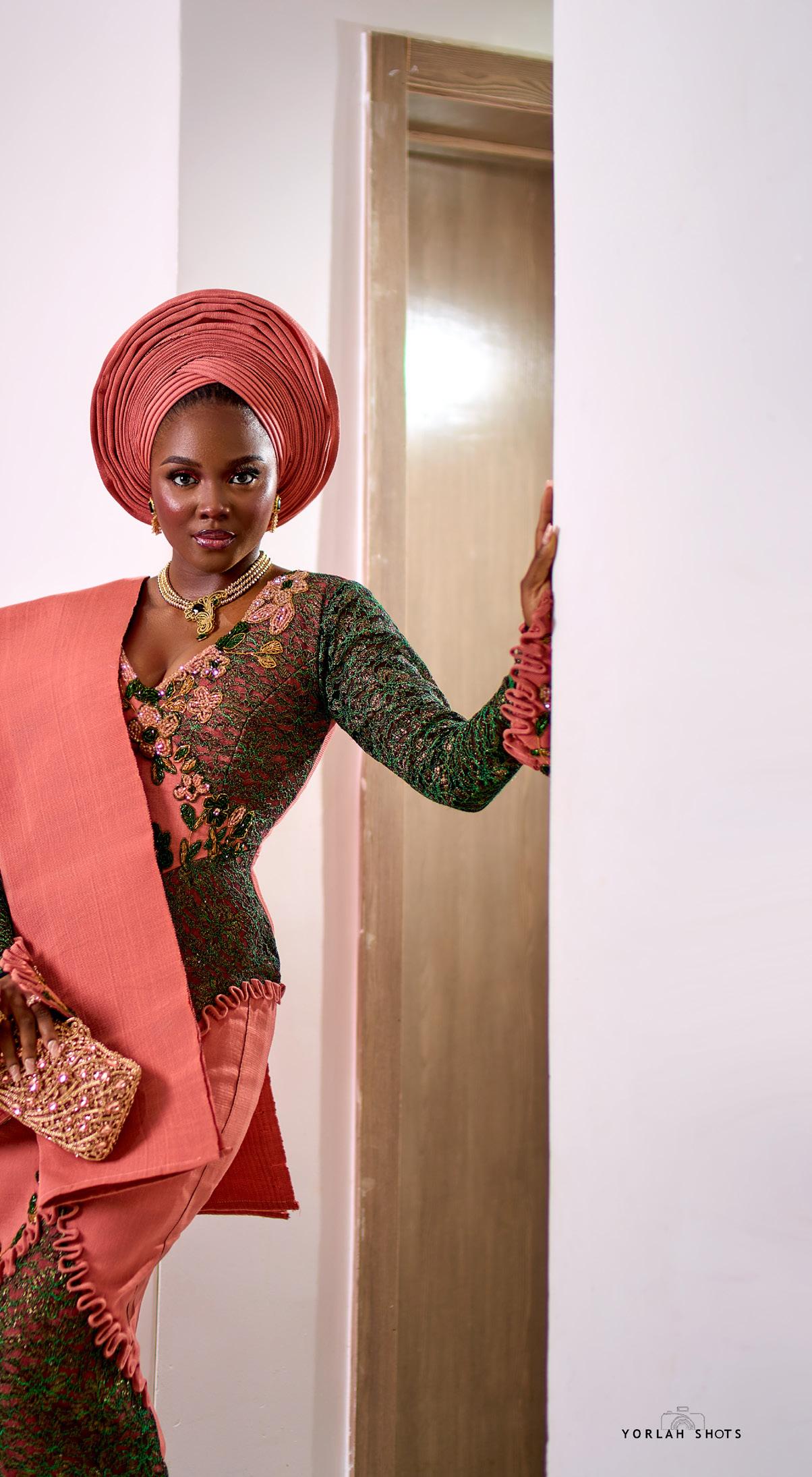
stylists are often overlooked in the fashion show process. While they are slowly gaining recognition in the runway ecosystem, it is not nearly as much as the ‘glam teams’, such as hair and makeup artists. Traditionally, makeup and hair are prioritised, but styling is just as crucial because it ties the designer’s vision into a cohesive narrative. Stylists should be involved from the conceptual stage, collaborating with designers to shape the narrative, mood boards, and show sequencing. That early involvement ensures cohesion between the clothes, the models, the set, and the overall message. When styling is brought in late, or not at all, you miss that magic of cohesion.
For someone starting out in styling, what are your top pieces of advice: both in mindset and practical steps?

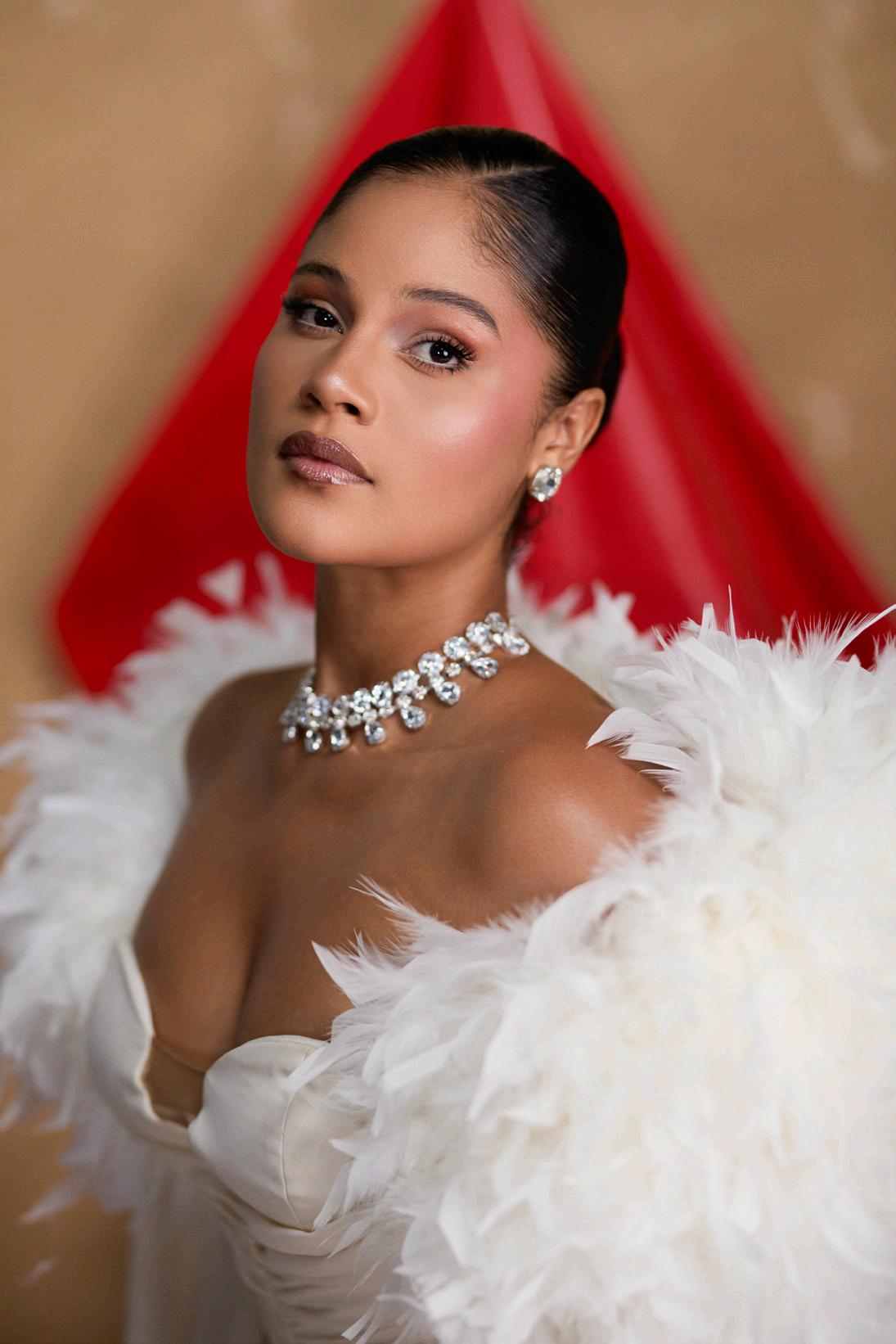
‘‘
Practical steps? Build a strong visual library by studying African and international fashion scenes, runways, photography, and even art. Network with designers, photographers, and makeup artists. Styling is collaborative. Importantly, practice. Style friends, create mock editorials, and document your work. Your portfolio is your biggest selling point.
Styling is a muscle; the more you use it, the stronger it gets. Take on small projects even if they are not glamorous at first, but just make sure you are intentional. Finally, understand that styling is about storytelling, not just putting clothes together; you must be curious, observant, and willing to experiment. Confidence is key because, as a stylist, you are often the one convincing people to see the bigger picture.`
We must be intentional about how we use cultural elements, ensuring they are not watered down or reduced to mere trends.

Interview
Michelle Adepoju Creative Director, KÍLÉNTÁR
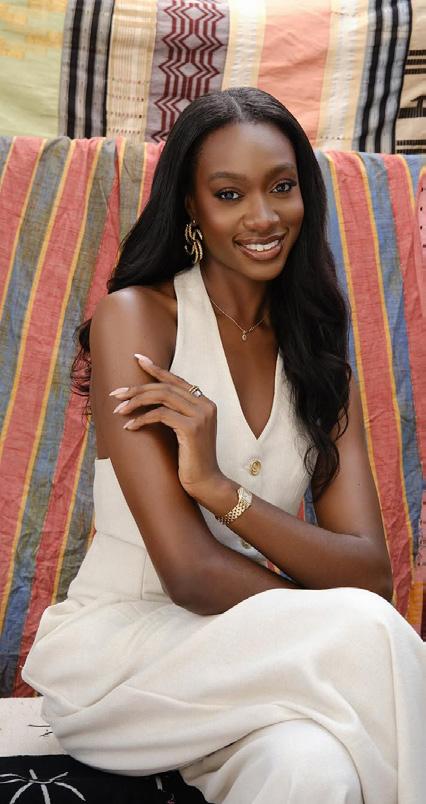


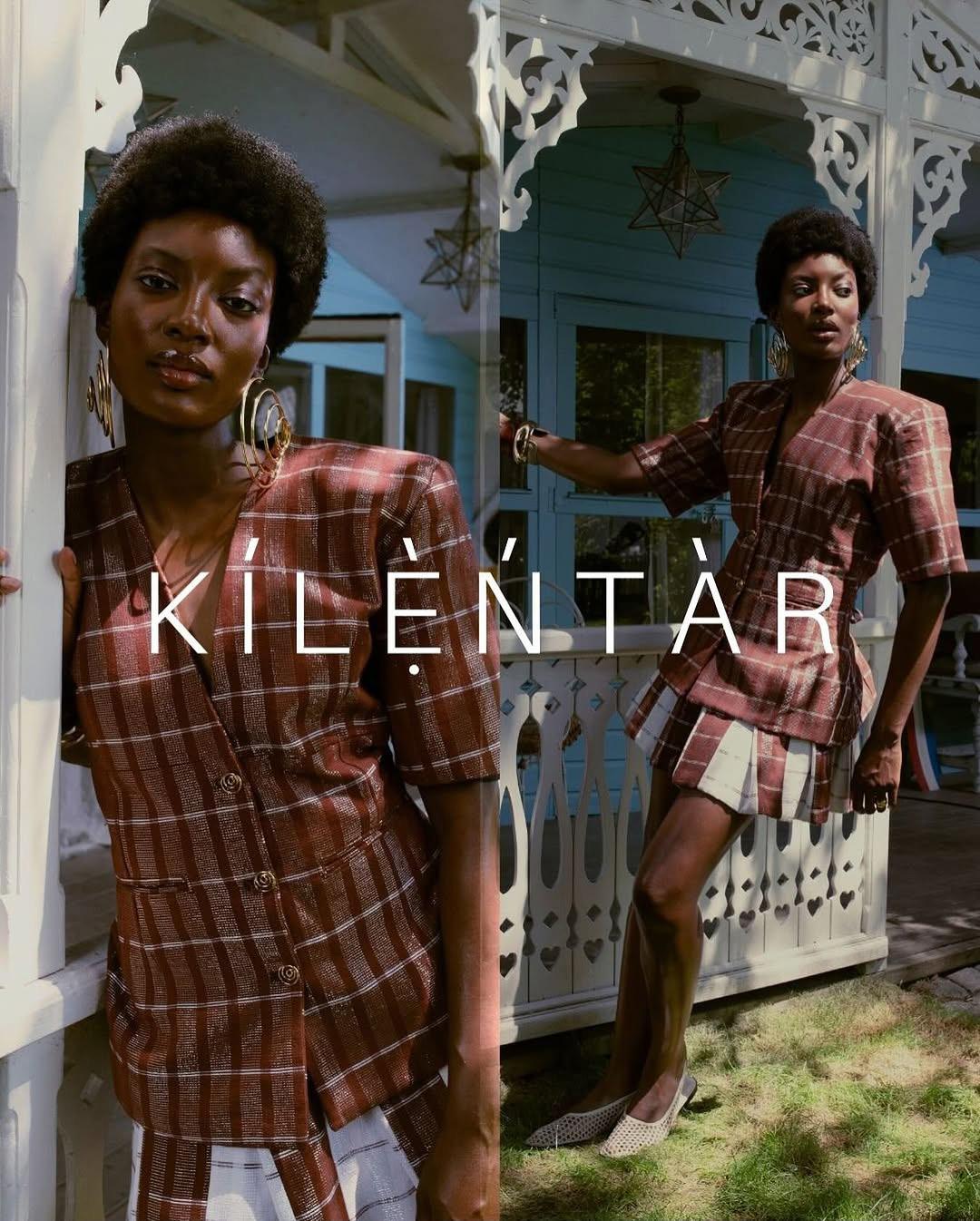
Michelle Adepoju is the Creative Director of KÍLÉNTÁR, a brand dedicated to reinterpreting the richness of African craftsmanship for a contemporary audience. By working in close collaboration with women artisans across West Africa, Michelle creates pieces that are modern, powerful, and timeless. Each creation holds culture at its core, designed to stand confidently on any stage in the world.
The global stage can be demanding, but I always centre the culture first.

What does ‘African’ fashion mean to you?
African fashion is identity. It’s history, culture, and pride woven into fabric. It carries memory and meaning, but it also speaks boldly to the future. To me, it’s not a label or a trend; it’s who we are, and it’s limitless in its expression.
How do you balance the global stage, with its commercial demands, while fiercely protecting the sacred, cultural stories woven into your fabrics?
The global stage can be demanding, but I always centre the culture first. I stay rooted by working directly with artisans, honouring the techniques, and keeping the process authentic. For me, success means growing without losing the essence of where the work comes from.
As we evolve globally as an industry, we are seeing a lot of interpretation and diffusion of what our identity as African
fashion is. What are your nonnegotiables when it comes to representing ‘African’ in a look or piece?
Authenticity and respect. The fabrics must reflect where they come from, the techniques must be honoured, and the stories behind them must be treated with care. For me, African fashion isn’t surface-level beauty; it’s identity, and I’ll never compromise that.
For the next generation of designers who will inherit this canon, what is the single, most vital lesson you want them to understand about safeguarding our fashion identity?
Hold on to the soul of the work. Sometimes the noise will try to pull you in different directions, but don’t lose sight of why you started and who you are creating for. Be innovative, but keep the roots intact. You already have the power; it doesn’t need to be validated by anyone else.

Interview
Ejiro Amos Tafiri Founder & Creative Director, Ejiro Amos Tafiri
African fashion means different things to different people; what does it mean to you, and how do you express that in your work?
To me, African fashion is simple: it is fashion the African way. It is the African voice, expression, and our way of clothing ourselves to express our identity. It embodies our heritage, spirit, and innovation. It is storytelling through fabric, form, age-old techniques, and craftsmanship. In my work, I express this by reinterpreting traditional silhouettes, fabrics, and techniques into designs that are relevant for today’s woman, while still carrying the depth of where we come from.
‘‘African femininity has always carried strength within it. The women who inspire me are bold, strong, and graceful.‘‘
For me, it begins with authenticity. Staying true to who we are and telling our stories in our own voice ensures that cultural depth isn’t lost in the process. Poise comes from a disciplined commitment to quality, and cultural depth comes from honouring tradition, whether that is through techniques, textiles, or narrative. That is how we contribute to global fashion without being overshadowed by it.
What are your non-negotiables when it comes to African fashion?
Your designs embody boldness but also an unmistakable African femininity. How do you weave both into one voice?
African femininity has always carried strength within it. The women who inspire me are bold, strong, and graceful. In my designs, I reflect this duality by balancing structure and fluidity with bold colours and striking cuts, paired with soft drapes and intricate detailing. Together, they create a voice that is powerful yet feminine.
As African fashion rises globally, how do you ensure poise and cultural depth remain at the centre?
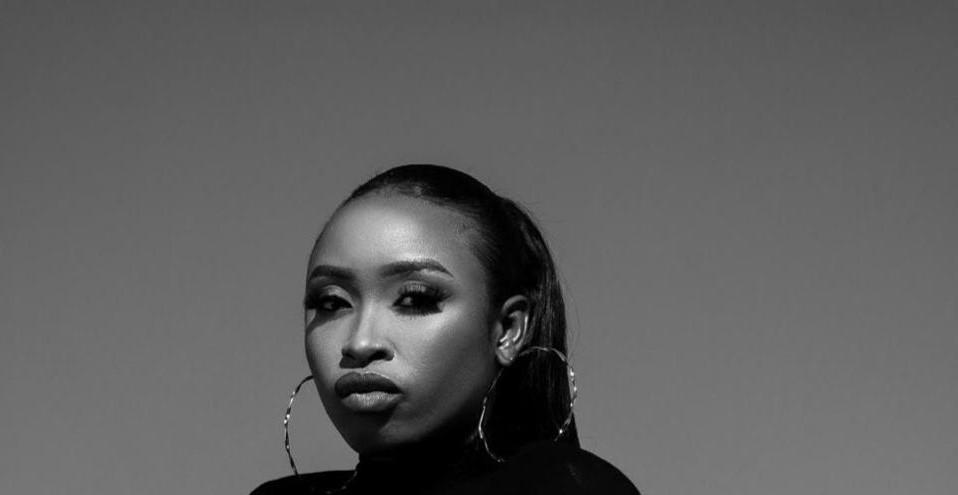
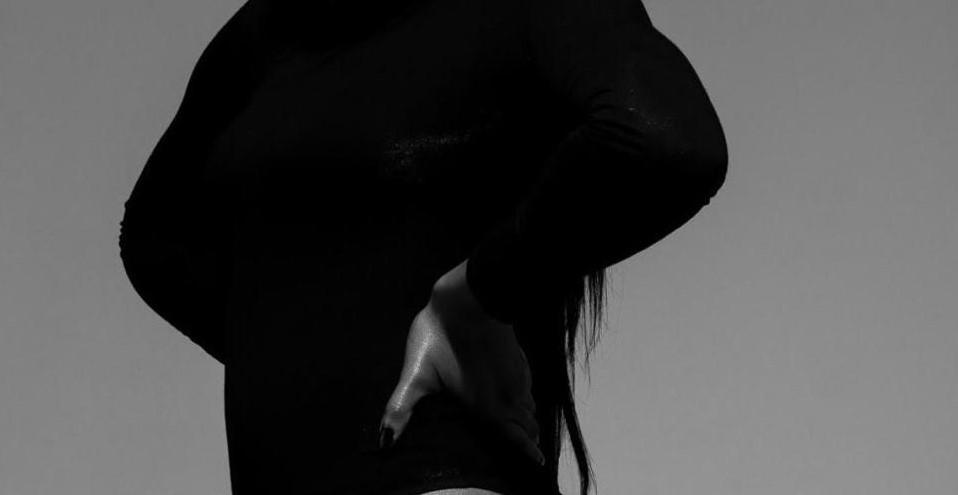

Meet Ejiro Amos-Tafiri, the Founder and Creative Director of her eponymous fashion brand. Her work celebrates the essence of the modern African woman, confident, stylish, and deeply connected to her roots. By merging traditional African techniques with contemporary innovation, Ejiro creates timeless, elegant pieces that beautifully embody both heritage and modernity. Her design practice is dedicated to crafting garments that transcend trends by reimagining a rich cultural heritage for today’s world.

Authenticity and excellence. I believe African fashion must always be true to its roots and must be executed with the highest standards of craftsmanship. Most importantly, it must uplift the people and cultures it draws inspiration from. Those values are non-negotiable for me.
With fashion’s global expansion, what compromises, if any, do you refuse to make in design, production, or storytelling?
I will never compromise on integrity. For me, that means staying honest in how we tell our stories, how we source and produce, and how we represent African fashion to the world. Expansion should not come at the cost of authenticity. Instead, the world should embrace the richness of African fashion on its own terms.
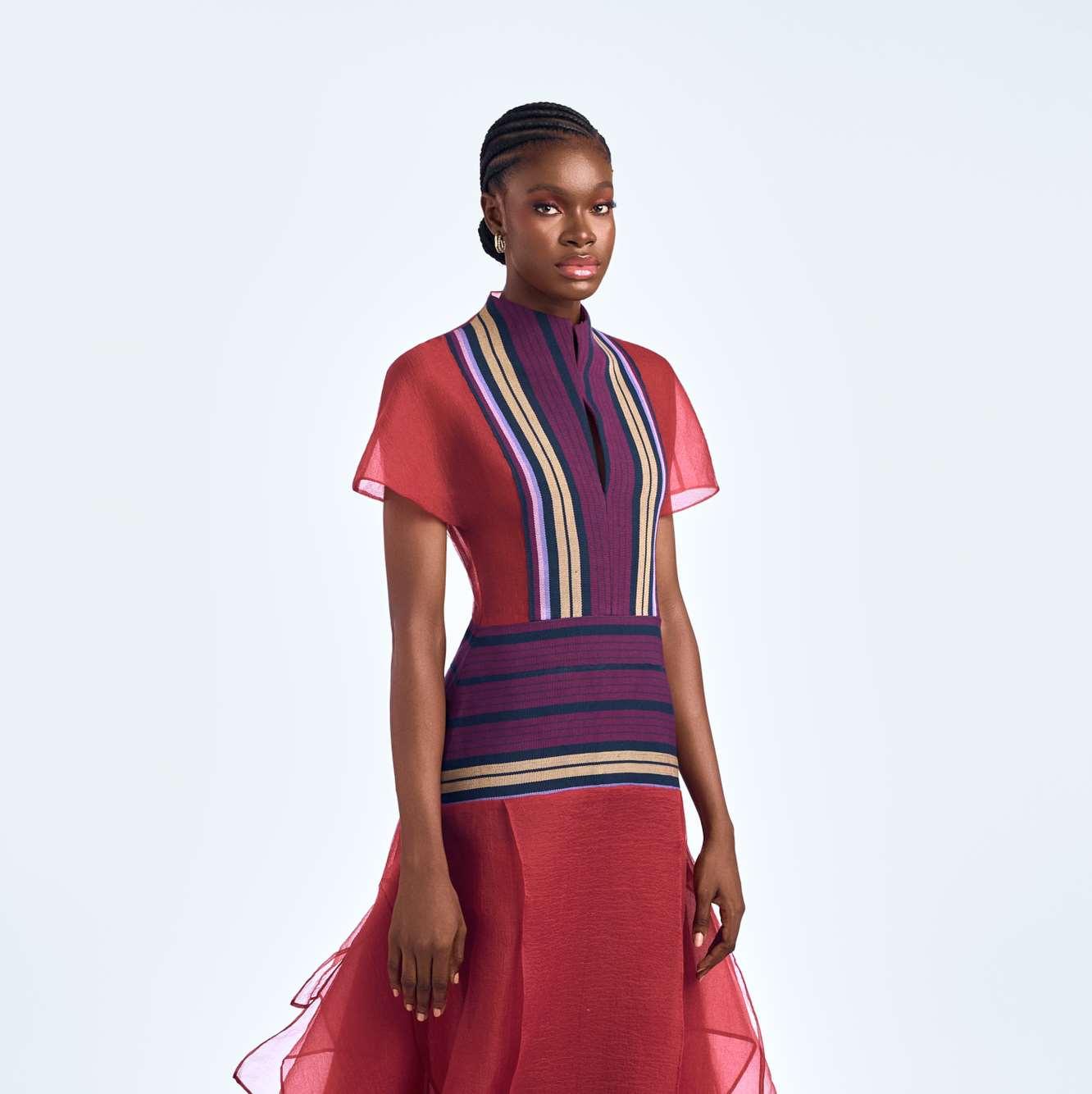
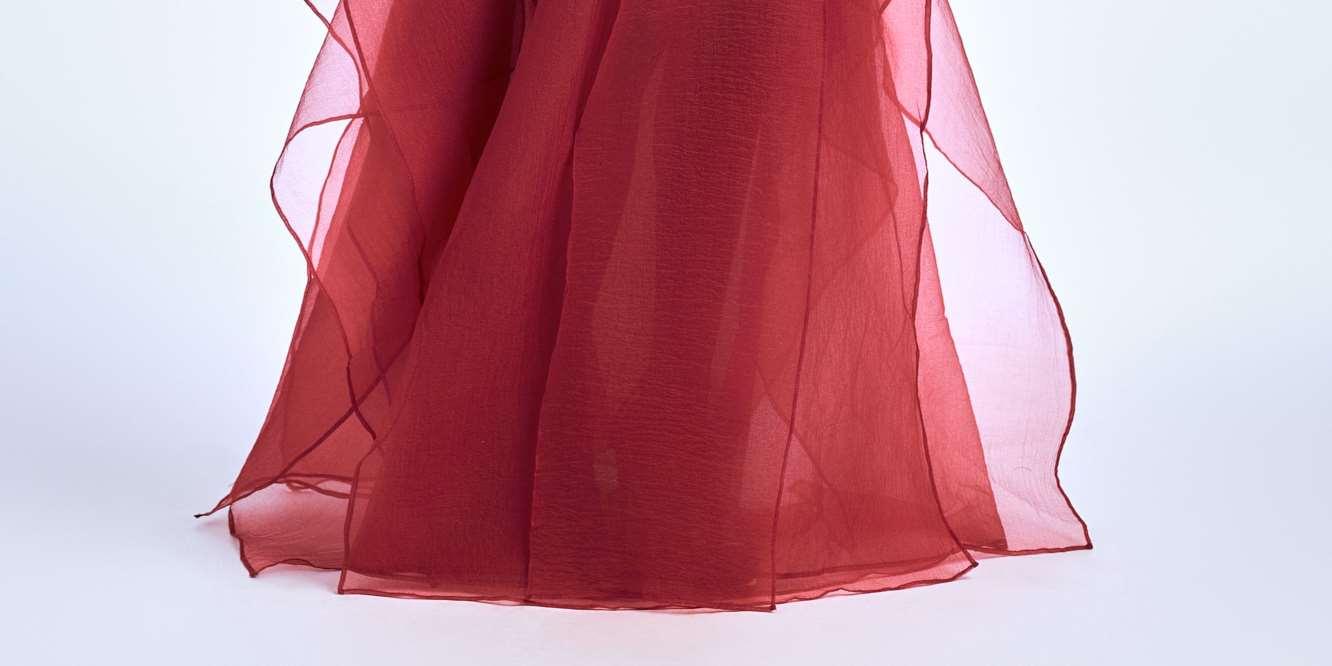

Kanyinsola Onalaja Founder and Creative Director, Onalaja
Meet Kanyinsola Onalaja, the Founder and Creative Director of Onalaja, a contemporary womenswear brand launched in 2014. Her work operates at the intersection of heritage, craftsmanship, and modern design. Trained in London and Rome, Kanyinsola’s design language fuses European luxury codes with her deeprooted Nigerian heritage, drawing inspiration from the storytelling and regalia of her Yoruba and Edo traditions. Onalaja is celebrated for its meticulously crafted, demi-couture pieces that empower women by blending rich African tradition with a maximalist aesthetic. With a profound focus on artisanal embroidery and embellishment, the brand is pioneering a new era of accessible luxury while championing size inclusivity.
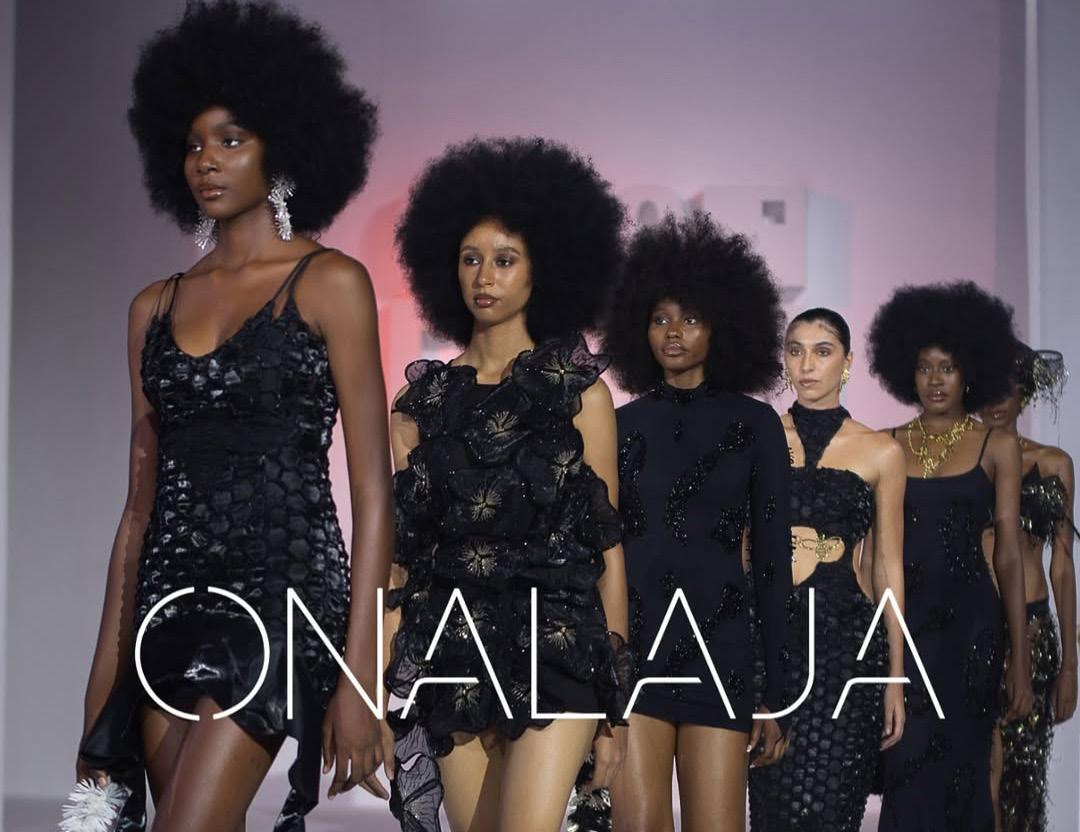
When you founded Onalaja in 2014, you anchored it on heritage, craftsmanship, and a certain kind of audacity. Eight years later, we saw an evolution. What were some non-negotiable values that, today, still carry the brand through?
The three core values that continue to shape Onalaja are authenticity, craftsmanship, and representation.
Authenticity means staying grounded in my identity. Whether showing in London, Lagos, or New York, the soul of the brand always reflects who I am and where I come from.
Craftsmanship is sacred; every bead and every stitch is intentional, often done by hand, and rooted in traditions passed down through generations.
Representation: this isn’t just about visibility; it’s about authorship. Onalaja exists to prove that African aesthetics deserve a place in the global luxury conversation and that women of every size, shade, and background deserve to feel seen, celebrated, and powerful.
In our collection “MARKED”, for instance, we drew from the African practice of scarification not as a surface aesthetic but as a metaphor for beauty, lineage, and divine protection. Every element in that collection was layered with meaning, and that rooted storytelling continues to be our compass.
Your work is deeply textured: hand embroidery, embellishment, artisanal techniques. Do you see these as simply aesthetic choices, or as cultural sentences in a larger story about African craft and identity?
For me, embellishment is a language. Every coral bead, every honeycomb motif, every raised embroidery is a line in a larger cultural narrative. These aren’t simply decorative elements; they’re markers of identity, memory, and spirituality. In the “MARKED” collection, for example, the raised beadwork mirrored traditional scarification, each line symbolising strength, resilience, and belonging. The embellishments weren’t added for show; they carried messages. Pearls placed like constellations, crown motifs, and honeycomb geometry, and they all speak of heritage and divinity. To reduce these elements to aesthetics would be to silence their voice. Onalaja’s dedication to handwork and embellishment is part of our commitment to preserving African craft as not only beautiful but deeply philosophical and enduring. Every stitch is a sentence in the story we are telling.


Onalaja embraces an expansive size range and a broader idea of beauty. What responsibility do you believe African designers carry in reframing who fashion is for, and who gets to feel seen in it?
I believe African designers have a unique opportunity and responsibility to reframe global beauty narratives. Our cultures have always embraced diversity. From regal silhouettes to ceremonial attire, African fashion has historically celebrated the body in all its forms. At Onalaja, offering sizes from XXS to XXXXL isn’t just about inclusivity; it’s about reflecting the real women who inspire the brand. I want every woman to see herself in our pieces, not as an afterthought but as the muse. Luxury should not be limited by size, geography, or background. As African designers, we can lead by example and show that fashion’s future is both inclusive and deeply rooted in culture.
Much of global fashion still sees “African” as a category rather than a canon. How do you navigate the tension between making work that is deeply African and ensuring it isn’t reduced to a token or stereotype?
This is one of the most challenging dynamics to navigate. Too often, African fashion is treated like a seasonal trend or a theme flattened into prints or clichés. I resist that by being intentional about authorship. Onalaja is not “African-inspired”. It is African-authored. That distinction is everything. My work comes from lived experience, from my community, and from ancestral knowledge. My training in London and Rome helps me translate these stories into a language the industry recognises, but I never dilute the source. Every collection is rooted in research, symbolism, and cultural relevance. By refusing to compromise or conform to how the world expects African fashion to look, I ensure that our work contributes to the canon not as an outlier, but as a core part of global luxury.
You’ve shown work in London, New York, and soon, Lagos Fashion Week. Does presenting in these different contexts change your storytelling, or is the story always told the same way, regardless of the audience?
The story is always anchored in the same truth, heritage, craftsmanship, and identity. What changes is the lens through which it’s presented. When we show in London or New York, there’s a need for translation helping audiences understand that what they’re seeing is not just “African fashion”, but fashion that belongs within the global luxury conversation. In Lagos, it’s more intimate. It feels like a return, a dialogue with the roots that shaped me. Take our new collection,

for example. It explores themes of lineage, divine protection, and identity concepts that resonate globally but are deeply understood in the African context. Abroad, I frame it as a celebration of African craft at the highest level. At home, it’s a tribute to a shared language with those who live the culture daily.
If you were to define the next decade of African fashion: not trends, but principles, what should be protected, what should be

amplified, and what should never be compromised?
Protected: Our craft. The beadwork, the hand-dyeing, the weaving. These are our cultural archives. They must be preserved, passed on, and invested in.
Amplified: African designers must not just inspire; they must lead. We need to own our narratives, set our standards, and build systems that support our voices.
Never Compromised: Authenticity. In seeking global validation, we must never dilute the richness of our stories. The future of African fashion lies in being unapologetically rooted, while boldly global in execution.
‘‘
I believe African designers have a unique opportunity and responsibility to reframe global beauty narratives.
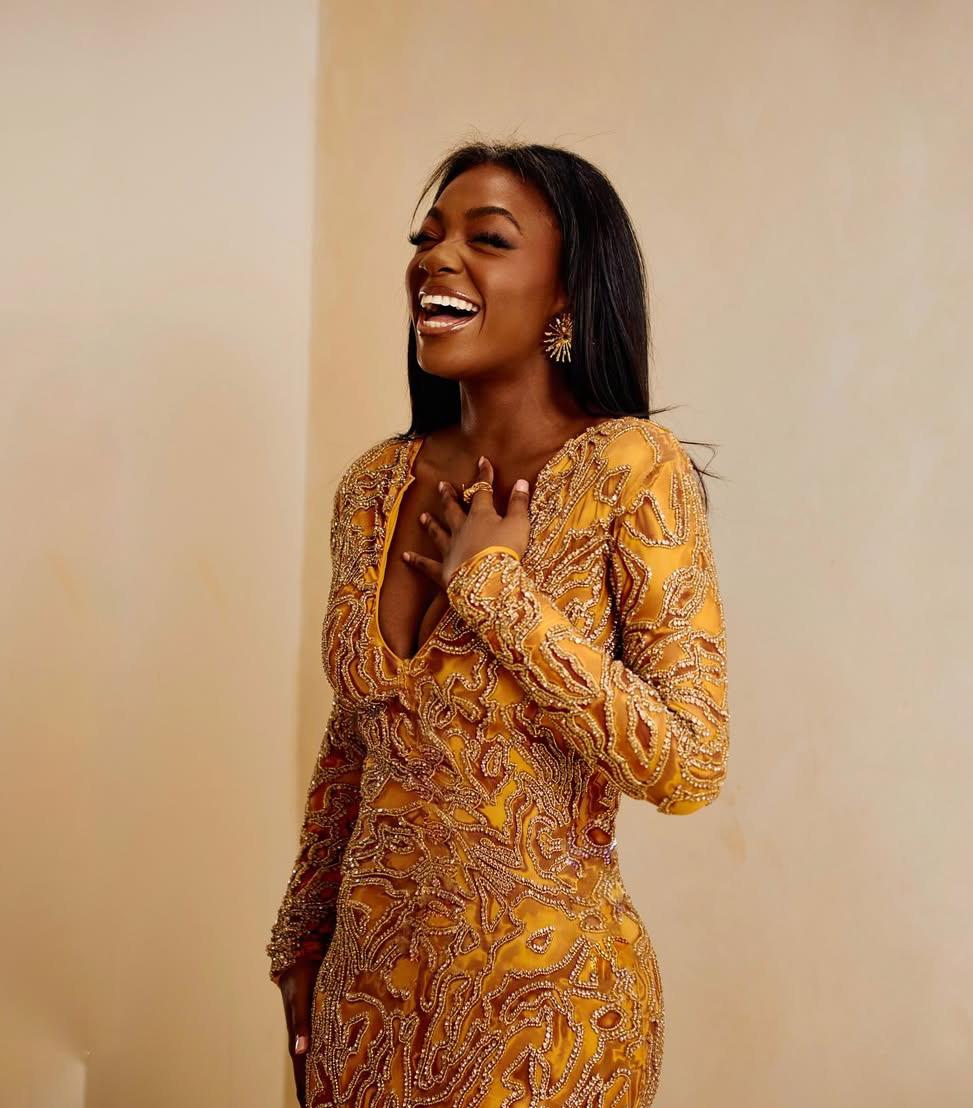



Nonye Udeogu (This Thing Called Fashion) Founder, WhatNayLikes
‘‘African fashion, to me, is everything coming from Africa. It’s our cultural export to the world.


Can you tell us the story behind This Thing Called Fashion, how it started and what ‘fashion’ means to you?
Meet Nonye Udeogu, a Nigerian creative entrepreneur operating at the intersection of style, brand strategy and curated retail. As the founder of KINDHEART, she provides content marketing solutions that enable companies to define their brand identity and engage target audiences effectively. Simultaneously, her retail venture, WhatNayLikes, addresses a key market opportunity by curating and distributing highquality global and local products in Nigeria. Her dual focus on brand development and curated commerce positions her as a strategic partner for businesses aiming to build a powerful presence.

‘This Thing Called Fashion’ started purely out of my love for fashion and my desire to tap into the creative and fashion industry. At the time, I didn’t know exactly what form it would take. I just knew I wanted to follow my passion and create multiple streams of income from it.
For me, This Thing Called Fashion has become more than a platform. It’s a community of people who love fashion and the lifestyle around it. It’s about sharing the best of fashion, travel, beauty, skincare, culture, and music with people who appreciate creativity and self-expression.
What is African fashion to you? And how do you represent this in your work?
African fashion, to me, is everything coming from Africa. It’s our cultural export to the world. It’s the joy of seeing our fabrics and styles come alive in ways that feel both traditional and modern. It’s about authenticity and integrity.
I represent this in my work by leaning into what feels authentic to me and pushing it with integrity. Through WhatNayLikes, my retail store, we give African brands more visibility globally by spotlighting the best products, from clothes, bags, and accessories to candles, scarves, and hairpieces. It’s all about celebrating what I love and amplifying it on a bigger stage.
With diaspora influence, global collaborations, and digital fashion blurring boundaries, what do you think should remain ‘nonnegotiable’ when we say something is truly African in fashion?

For me, the non-negotiable is cultural integrity and authenticity. Trends will come and go, but respect for our heritage and the originality of our work must always remain.
Fashion is often described as a mirror of society. What do you think African fashion is reflecting to the world right now about who we are as a continent?
African fashion reflects our creativity, confidence, and uniqueness. We’ve mastered the art of taking local fabrics and cultural elements and transforming them into contemporary pieces that stand out anywhere in the world. It shows that as a continent, we are stylish, innovative, and unafraid to express our identity in ways that are both authentic and globally relevant.
If someone were to open the KINDHEART archive in 50 years, what stories would you want them to read about African fashion content in this era?
Alongside other kinds of content, I’d love KINDHEART to be remembered for its ability to help brands clearly define their identity and translate it into reality. I want us to be known for building greatness, making brands distinctive through powerful visual storytelling.
In 50 years, I’d want the stories in our archive to inspire people to see more in themselves, believe in their ideas, and know that African creativity has always been world-class.

By SkinCure Medispa
310b Akin Ogunlewe Street, VI, Lagos

Start Here To Embrace This Truth And Reveal Your Radiance


Every collection begins with fabric, cut, and form. Yet true style begins with skin. It is the one couture you never remove, the canvas that shapes how fashion is experienced. A garment, however refined, is transformed by the vitality of the skin beneath it. Radiant skin is not merely a backdrop: it is the light that gives every look its life. The glow of health, the clarity of confidence, the vitality of radiance: this is the accessory fashion cannot replace.
At SkinCure, we see skin as both canvas and couture. Our treatments are not fleeting trends but long-term artistry beneath the surface. Peptides weave resilience. Collagen restores firmness. Hyaluronic acid drenches the skin in hydration. NAD infusions awaken vitality. Whether it’s a treatment or therapy, everything is carefully designed, not for the moment, but for the movement, so your skin is in balanced motion with the beautiful pieces you use to adorn it.
Fashion fades. Trends evolve. Collections change. But skin that glows with health and energy transcends every season. It is confidence you can wear anywhere, with or without fabric.
The question is, will you embrace this truth? Will you continue to invest only in wardrobes while neglecting the canvas that carries them? Or will you step into an era where your skin health becomes the ultimate luxury, and science becomes the tailor that shapes your glow?
We are the future of skin health in Lagos: a medispa rooted in science, driven by results, and committed to treatments that go deeper than the surface. Because the truth is simple: your skin deserves more than beauty and wellness trends. It deserves the truth.
This season and every season, honor the canvas that makes every look whole. A simple consultation, a skin analysis, and a one-on-one conversation can begin the journey.
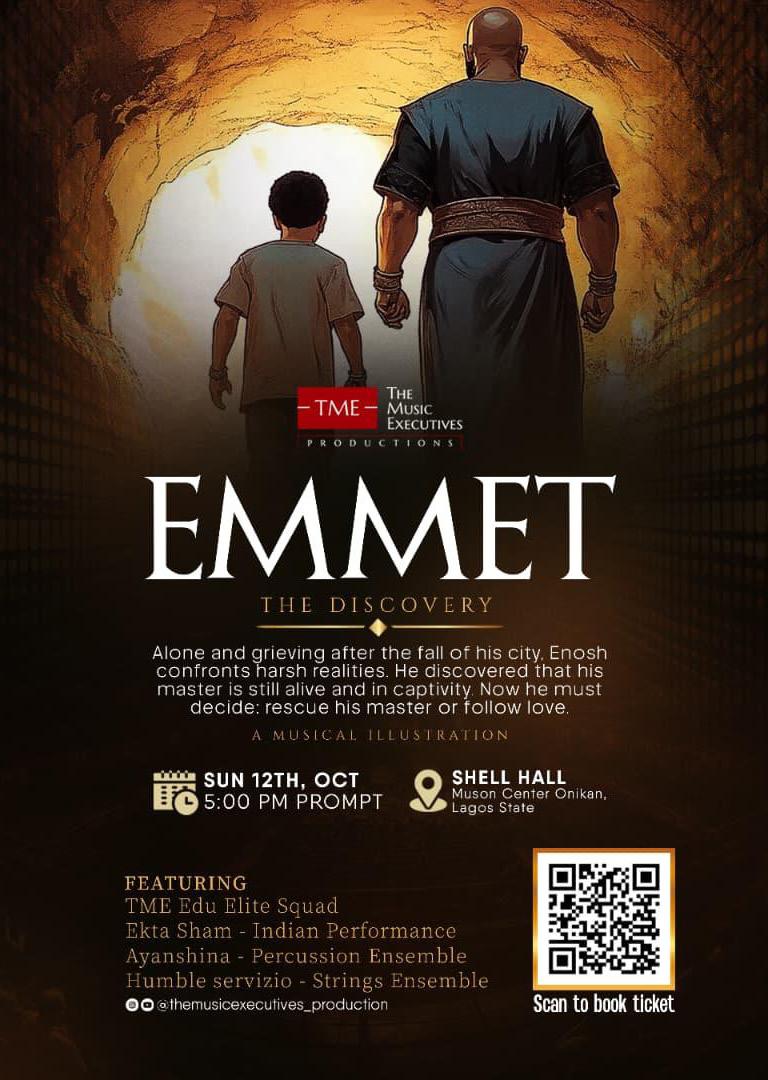

Interview
Dr. Akin Faminu
Fashion and Cultural Storyteller
We need to, first and foremost, realise that our history is our strength and our identity
In a global fashion landscape that has historically centred Western ideals, what does being “unapologetically African” in your style mean to you on a personal level?
For me, I strongly believe that the fashion industry in Africa has so much to offer globally. We have a wealth of talent and culture that needs to be seen in the best way possible, and this is where creating at a level that is the standard anywhere in the world is crucial. I make it a point to always wear African designs in the major fashion cities globally during fashion seasons in Paris, Milan, London, etc., because African fashion is excellent enough for any stage, no matter how big.
What are the biggest misconceptions about African fashion that you still encounter, and how do you use your platform to actively dismantle them?
The biggest misconception is that African fashion, and the industry at large, is devoid of detailed excellence. There’s a misconception that creativity is raw but not refined, or that it is unique but not executed with maximum quality. My niche is creation and cultural storytelling through fashion, and we are focused on delivering this all over the world at a level of quality that is unquestionably the global standard. It is far more than just wearing clothes or styling looks; it is a cultural shift and a positioning of African fashion as an industry that is on a par with any other fashion industry globally.
Beyond aesthetics, how does the conscious choice to wear and promote African designers contribute to the continent’s economic empowerment and the building of sustainable creative industries?
Economic empowerment is an inevitable

Meet Dr. Akin Faminu, a distinguished fashion and lifestyle creator dedicated to cultural storytelling. Through his work, he champions the excellence of African fashion, focusing on elevating its presence and appreciation on a global stage.


result of the positive cultural shift that excellent cultural storytelling in fashion creates. It is not about the immediate sale of a few pieces here and there, but about the mental recalibration that African fashion is not inferior to fashion from anywhere else in the world. When the appeal increases, the demand increases globally, which also positively affects creative industries across the board, from design and production to execution.
What conversations should we be having among ourselves within the continent about evolving our traditions in fashion
while still honouring their history and meaning?
We need to, first and foremost, realise that our history is our strength and our identity; it’s what makes us stand out and what makes us unique. Sometimes it feels like even the Western world appreciates that more than we do ourselves, as you often see in their collections, where many African elements feature. These conversations need to be had. We need to fully utilise the richness of our history and culture and execute it so excellently that there is no room for misappropriation.

Interview Nkwo Onwuka Designer and Creative Director, NKWO

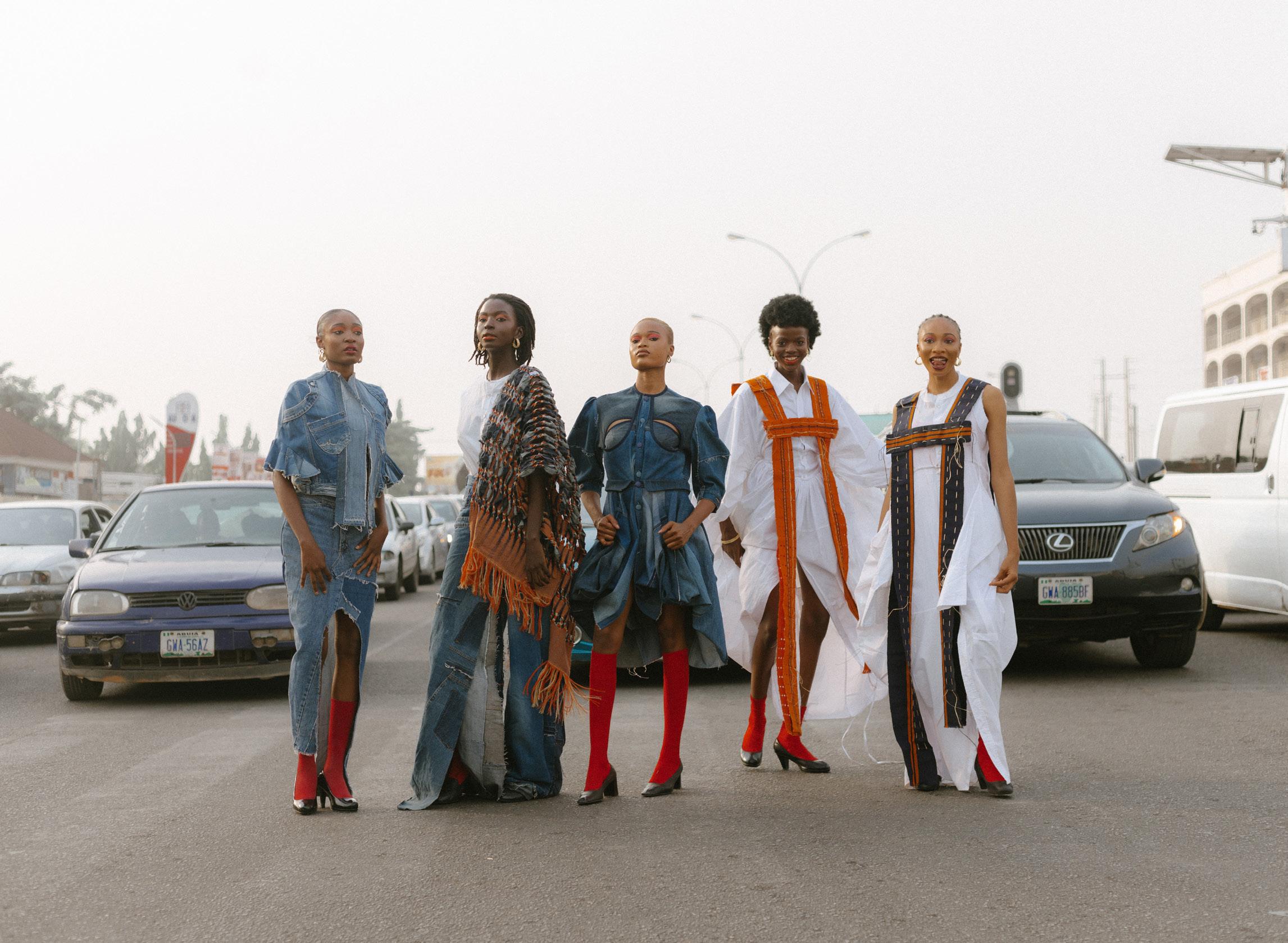
What does ‘African’ fashion mean to you?
African fashion is made by ‘us’. It cannot be defined by print and goes beyond the creative process. Textural elements, form, and function, together with a deep-rooted understanding of our history, culture, and traditions, influence us in ways that move us towards innovation and a new way of representing ourselves. It is about storytelling, problem-solving, the hands that create, and building communities around cultural preservation and economic development.
Your work is often described as a form of activism. What specific stories or voices from the African continent are you most passionate about amplifying through your designs right now?
Through my work, I am most passionate about amplifying a positive story of Africa, especially to Africans! We are the ones who have to build the societies we want to live in, and we are more than capable of doing so.

Meet Nkwo Onwuka, the Founder and Creative Director of the fashion brand NKWO, and a leading pioneer in Nigeria’s sustainable fashion movement. With a primary focus on textile waste reduction and the preservation of traditional craft skills, she is the inventor of DAKALA Cloth, an innovative, ethical textile crafted from waste. Although she holds a degree in Psychology, Nkwo’s lifelong passion for design sparked in childhood by learning to sew from her mother, ultimately guided her back to the world of fashion. Today, from her base in Abuja, she is steering the NKWO brand towards a future of total reuse and circularity.
We have to be the change we want to see; nobody is coming to save us. My brand is an example of how to build something from nothing by creating the type of communities
we need for sustained economic growth, independence, and cultural preservation.
When your designs are showcased on international platforms, what is the single most important aspect of the African voice you want the audience to hear and understand, moving beyond common stereotypes?
The single most important aspect of the African voice I want international audiences to hear is that we have just as many meaningful contributions to make towards building a better world as anyone from anywhere else. Our voices need to be heard, and we need the spaces to show what we can do. I am proud to have been able to do this through various international awards and recognition for the work I do in the sustainable fashion and social impact space.
Much of your practice is rooted in upcycling and preserving traditional techniques. In a time of blurred lines, what threads do you believe must remain

non-negotiably African in fashion?
In the fashion space where inspiration has no borders, our culture and traditions are what will set us apart from any form of appropriation. African cultural heritage is so diverse and dynamic, and was once deeply ingrained in our whole lives. Many of our traditions remain largely unexplored and are vanishing; we need to reawaken, harness, and tailor them towards our continued development in the fashion industry and the continent as a whole.
As African fashion scales globally, how do we protect the soul of our craft from dilution or exploitation?
As African fashion scales globally, protecting the soul of our craft is vitally important. We need to ensure that we have the IP for all our traditional systems, stories, and processes. We need heritage-based education and training where learning is based on the thorough documentation of techniques, tools, and data collection to create a digitally supported archive. It is important for our governments and policymakers to realise the economic, social, and cultural benefits of preserving our traditional craft skills.
‘‘ In the fashion space where inspiration has no borders, our culture and traditions are what will set us apart from any form of appropriation.
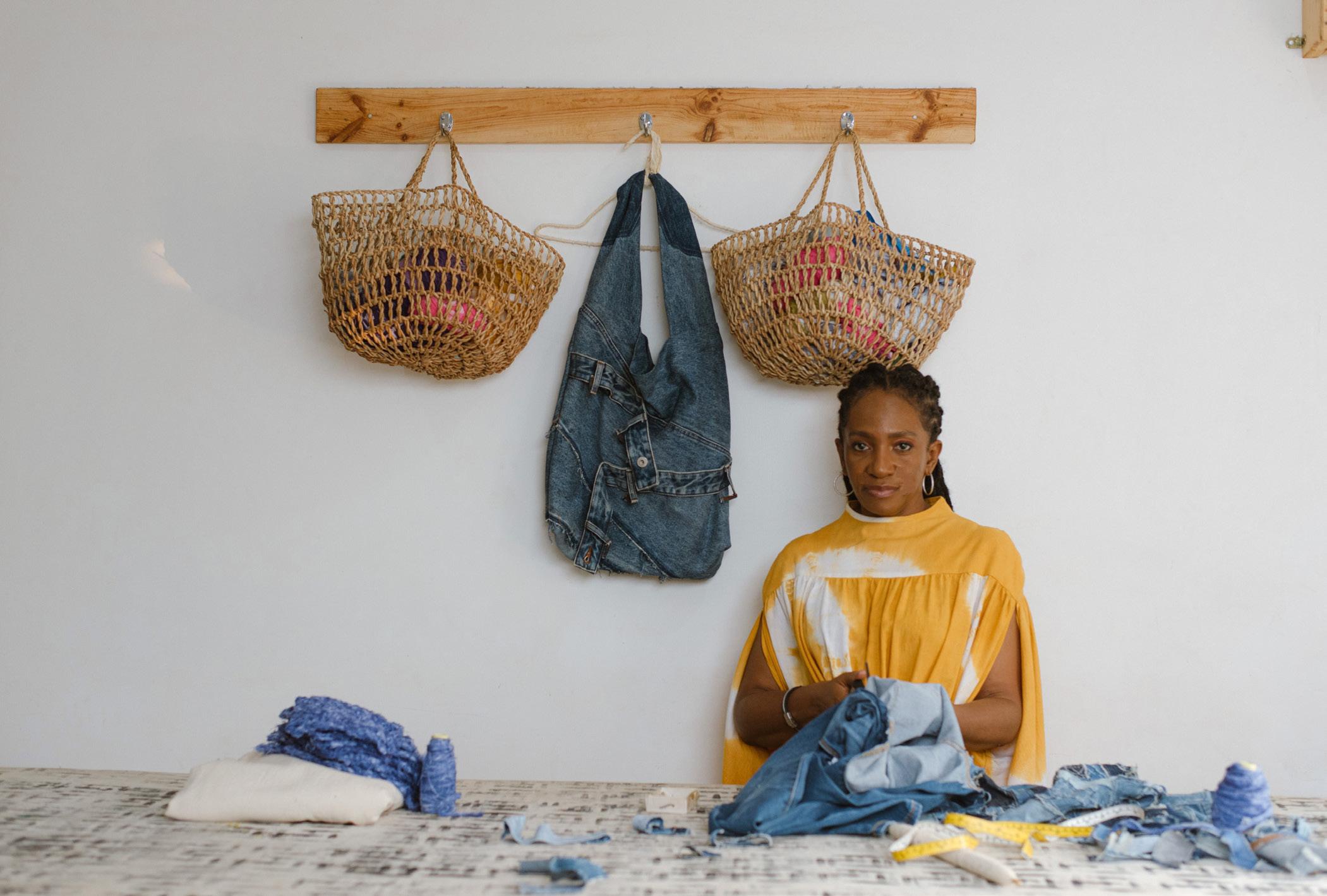











Interview Cynthia Abila Creative Director, Cynthia Abila Studios

Meet Cynthia Abila, the Creative Director of her eponymous Nigerian fashion label, where she explores the dialogue between heritage and modernity. Viewing fashion as a form of storytelling, she creates powerful, elegant clothing that carries history and memory. Her work is distinguished by the brand’s signature Njam fabric, a sustainable textile handmade by internally displaced women, making each design a unique and responsibly crafted piece of wearable art.
‘‘

I ground my work in authenticity. I am African, and most distinctly Nigerian, so it naturally flows into my work.
African fashion means different things to different people; what does it mean to you, and how do you express that in your work?
To me, African fashion is memory and modernity in dialogue. It is an archive of who we are, where we come from, and who we are becoming. African fashion is not just aesthetics; it is lived history woven into fabric. In my work, I express this by using storytelling as

the foundation, whether through traditional weaving techniques, motifs inspired by folklore, or silhouettes that echo both power and elegance. Every collection is both an homage to heritage and a vision for the future.
Your collections often radiate power and grace in equal measure. How do you celebrate the women who wear your designs through the stories you tell in fabric and form?
The women who wear Cynthia Abila are at the centre of the story. I see them as custodians of history and leaders of the present, women who embody strength but also embrace softness. I celebrate them by designing clothing that affirms their presence, enhances their confidence, and tells the world something about their journey without them needing to speak. From the drape of a kimono to the structure of a tailored piece, every form is crafted to elevate the woman and honour her grace.
As African fashion rises globally, your work has become part of a much bigger conversation. How do you ensure that your voice remains both distinctly Nigerian and universally resonant?

I ground my work in authenticity. I am African, and most distinctly Nigerian, so it naturally flows into my work. The fabrics, colours, and stories reflect where I come from. At the same time, I pay attention to global language, trends, and forms, creating pieces that feel at home anywhere in the world. By staying true to my roots while embracing the universality of design, I ensure my voice resonates both locally and globally.
Many look to your brand as proof that authenticity and ambition can coexist beautifully. What principles guide you as you continue to grow without losing that essence?
Three principles guide me: Authenticity and Individualism: This means staying rooted in my heritage and storytelling, aesthetics, and style. Excellence: Creating work that meets global standards in craftsmanship and design.
Sustainability: We strive to see that through our fabric, Njam, and through conscious production, growth does not come at the cost of community or environment.
These principles keep the brand aligned with its essence, no matter how far it expands.


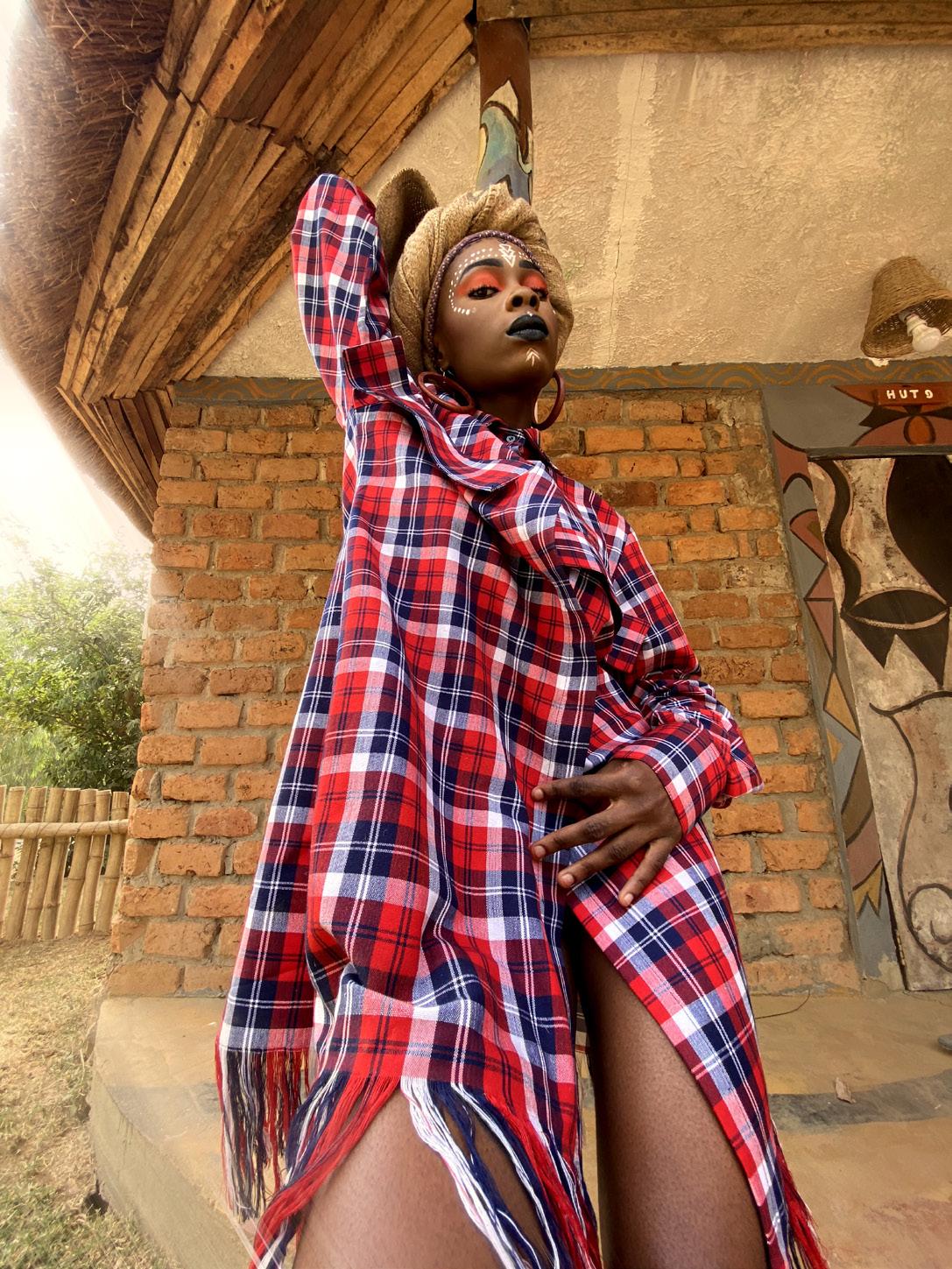


By Senami Morris AMDL LY
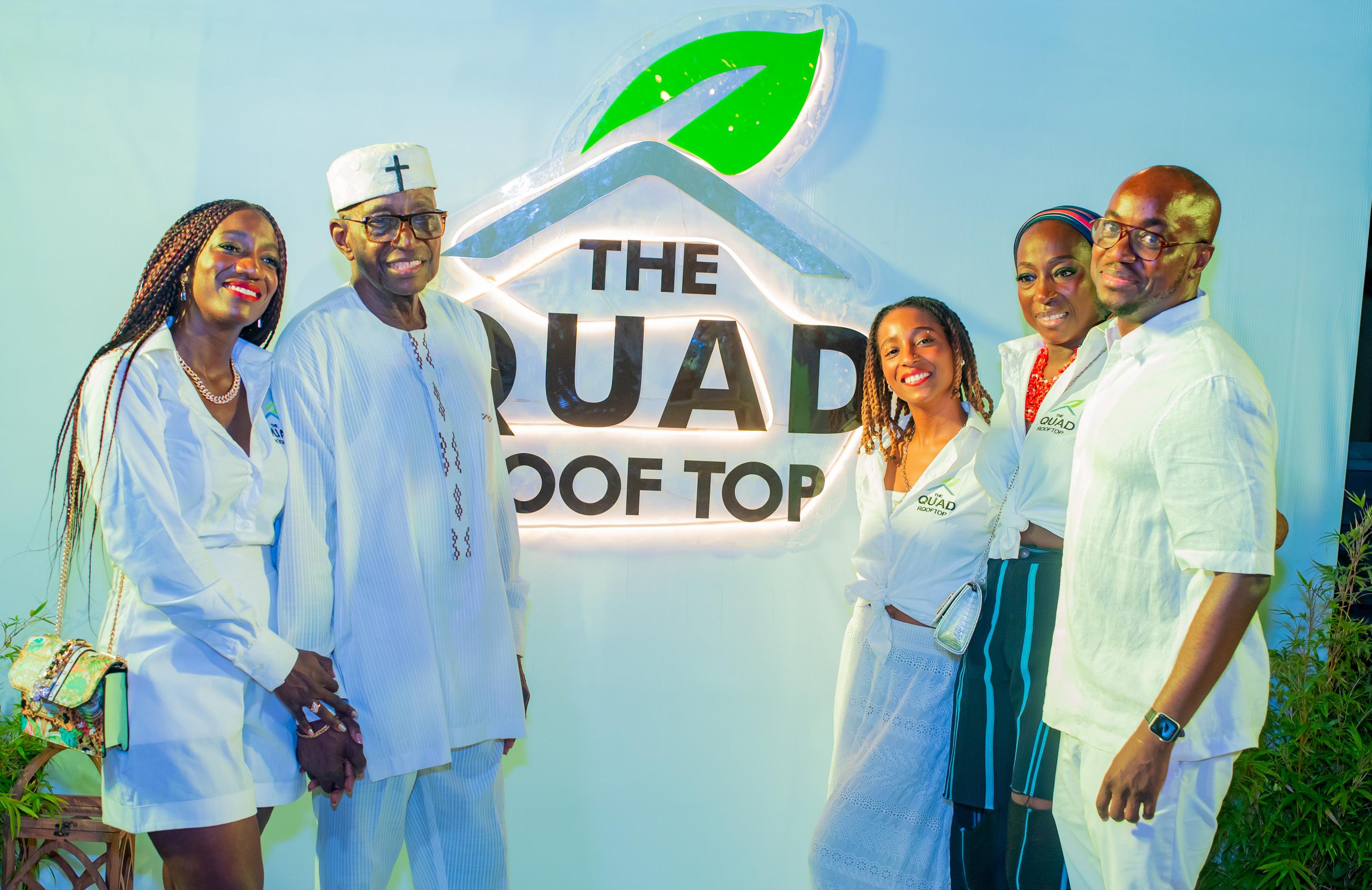
Suspended above the city’s rhythm lies a space untouched by the expected. Here, time slows, the crowd softens, and every detail whispers exclusivity. There is only one like this, and it isn’t found. It’s discovered.
Not a Bar. Not a Restaurant. It’s The Quad Rooftop.
Most Lagos rooftops double as bars or restaurants. This? This is different.
The Quad Rooftop is first an event space, a blank-canvas stage for experiences as elevated as the skyline itself. Here, every gathering becomes a bespoke encounter with the city’s night air and endless horizon.



On the 20th of September, 2025, we had an evening under the stars. This debut proof of concept unfolded beneath a velvet sky, with the finest of Lagos’ cultural influencers, corporate visionaries, and creative entrepreneurs welcomed with organic vitality shots and then guided into a night of live music, gelato, and meaningful connection.
Thought-provoking prompts invited guests to share the stories living within them, sparking conversations guests later described as “light and enjoyable,” “cosy and classy”, “inspiring and unforgettable.” Many planned to stay an hour and lingered long after, wrapped in an atmosphere both comfortable and quietly electric.
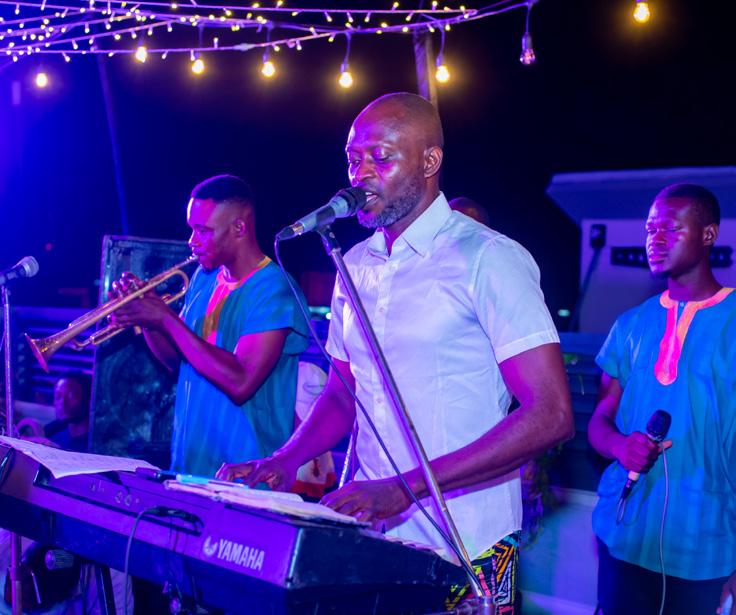
The Quad Rooftop is the flagship of Ave Maria Developments Ltd., a company reimagining Lagos real estate as spaces for connection, creativity, and commerce. Our mission is simple: elevate how Lagos gathers, from private celebrations to brand activations and cultural experiences that tell new stories.
Join the Story
Schedule a private walkthrough.
Contact:
Senami Morris – Project Manager +2347073138367
senamimorris@gmail.com
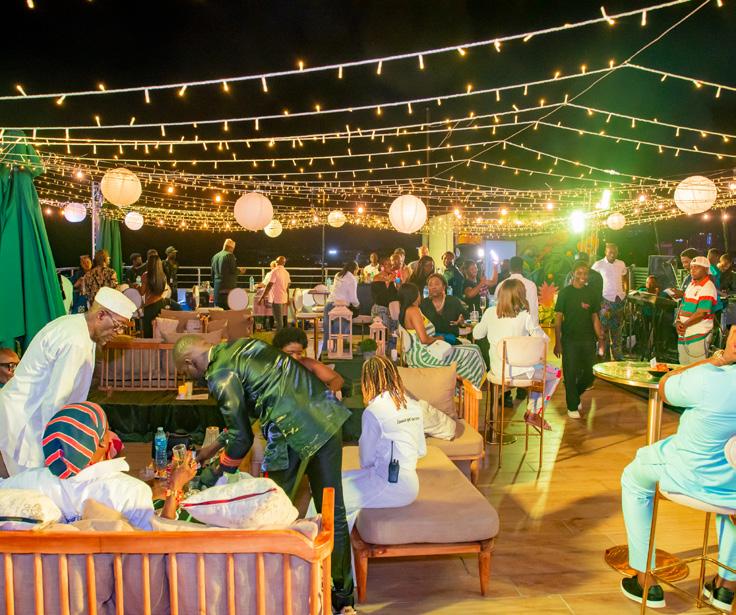

Interview
Vincent Desmond
Journalist and Editor-in-Chief, A Nasty Boy Magazine
Meet Vincent Desmond, a writer, researcher, and journalist whose work is driven by a profound curiosity about people, cultures, subcultures, and the shifts that shape them. He channels this passion for discovery into insightful commentary and analysis, with bylines in prestigious publications such as Vogue, the Financial Times, The Guardian, Rolling Stone, and Billboard. Beyond his editorial work, Vincent provides research and consulting for some of the world’s leading companies, including Spotify, Google, and Canvas8, applying his unique cultural lens to advise globally recognised brands.
African fashion means different things to different people; what does it mean to you, and how do you express that in your work?
If I’m being flippant, African fashion is fashion made by African talent. But if I try to be more critical, especially about the kind of African fashion I share or discuss, it’s typically made by African talent, yes, but it should also involve traditional techniques, reference fabrics from African fashion history, and, most importantly, capture cultural identity. In my work, I love spotlighting this talent and sharing it with the same reverence I see Western media give their biggest fashion houses because that’s what it deserves (and more!).
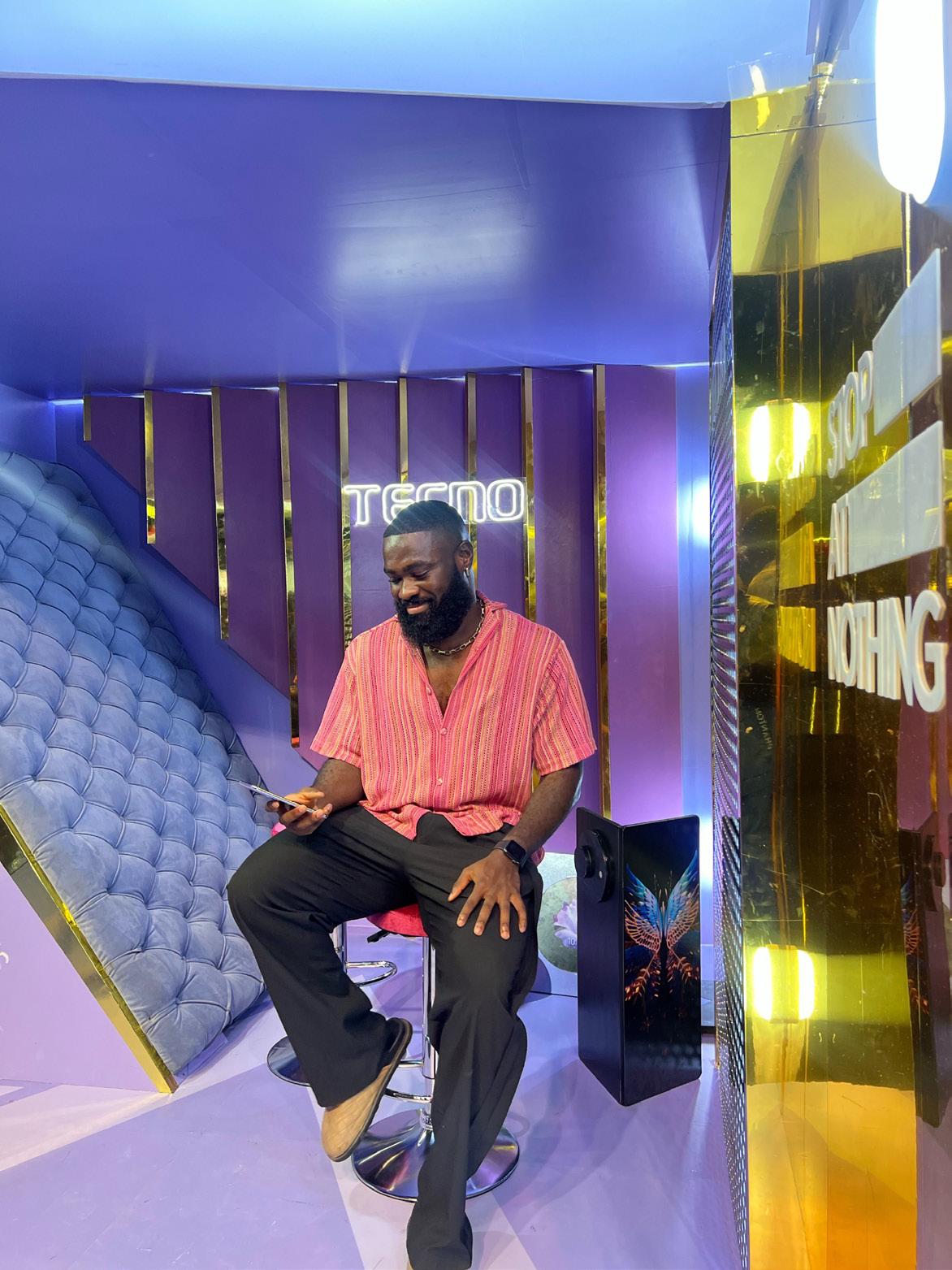
Africans themselves are Africa’s greatest resource and must remain central to African fashion‘‘

Much of your work insists that fashion is not just about clothes, but about systems, politics, and people. How important is critique in ensuring African fashion isn’t just celebrated but also understood?
Critique is how we truly understand a subject. Carefully examining a project, a collection, or a brand, understanding not just what’s in front of you but the history and forces that led to it, is crucial. I love context. I’m a fan of that Kamala Harris question: “You think you just fell out of a coconut tree?” Because truly, none of us and nothing that exists today did. Everything is a progression of something. Critically looking at contemporary products, a fashion brand or collection, a musical artist or album, a trend or a subculture and tracing what it’s doing in the zeitgeist, following how systems shaped it, and noting who is influencing the change, all expand our understanding and appreciation.
Representation is at the heart of your practice. When you spotlight queer African identities in fashion media, what do you hope readers and audiences take

away from the images and words you curate?
That we are ordinary. Queer people are, frankly, very ordinary. Our “extraordinariness” is thrust on us by the systems and societies we live under. When I share queer stories, it’s to emphasise that we are deeply normal people, but because of oppression, queer people often have to develop a unique perspective, a particular empathy, and an understanding of the world that many might not otherwise have. It sounds contradictory, this ordinariness and peculiar perspective, but I don’t believe it is.
How do you balance the urgency of preserving archiving traditions, histories, and voices with the equally pressing need to innovate and push African fashion into uncharted futures?
As someone who considers documenting culture part of his “ministry,” people often assume I see myself as a custodian of tradition. I love documenting the present and learning the histories of the past because they provide contextual information that fuels what we do next, what we do differently, and what we do better. To me, it’s not hard to balance preservation and
innovation, especially with African fashion. I think it’s the opposite: knowing our traditions and history is the perfect way to innovate for the future, as long as we stay flexible and focused on meaningful change.
Looking at the global stage, where do you think African fashion media is excelling in terms of representation, and where does it still fall short?
African fashion and African fashion media excel in their talents. We have a wide array of people who have gained global attention and proved they can hold their own on the world stage. It’s impressive. Since the 2010s, we’ve seen growing interest; remember when Naomi Campbell called for Vogue Africa? That shows the local talent has more than made its mark. Where it falls short is structure. Stronger structures could help African talent scale up, but those are lacking. Africa is vast, deeply fashionable, and full of people interested in media and fashion. And yet, where is the funding? Where is the audience development?
With globalisation blurring cultural lines, what do you think should remain nonnegotiable when we speak of “African” fashion?
Africans. Africans themselves are Africa’s greatest resource and must remain central to African fashion. We see a mass exodus of Nigerians, Ghanaians, so many of us scattered across the globe, doing amazing things wherever we land. Those creations, especially in fashion, absolutely count as African fashion. What doesn’t? Work made by non-Africans. Even as globalisation blurs lines, I don’t think things made by nonAfricans should be called African fashion. At best, they’re African-inspired; at worst, appropriation.

By: Matildah Digital Marketing Executive, Lost in Lagos
Nigeria’s fashion scene is a constant hum of energy, where tradition meets reinvention and creativity spills beyond the runway. Beneath the spotlight of established names, an underground movement is thriving, with designers pushing boundaries, rethinking sustainability, and weaving bold stories into fabric. These creatives are not waiting for permission; they are carving new lanes and inspiring fresh conversations around what it means to wear Nigerian fashion. Meet ten underground designers making waves across the country and beyond.
1
Cute Saint channels Lagos’s restless spirit into bold, forward-thinking pieces that challenge convention. Muftau Femi Ajose infuses deconstruction with sleek tailoring, crafting garments that merge contemporary silhouettes with cultural references. His approach pushes streetwear into the realm of art, often incorporating gender-fluid elements and textured layering. Cute Saint’s rebellious yet refined edge has positioned it as one of Nigeria’s most exciting underground labels.


Obida is where cultural pride meets futuristic fashion. Founded by Obida Obioha, the brand reimagines African identity through striking prints, fluid shapes, and experimental details. His work champions individuality, reflecting Nigeria’s youth culture in motion while staying rooted in heritage. Obida’s pieces speak to those unafraid to stand out, striking a balance between accessibility and avant-garde boldness. It is a true underground name, steadily shaping the mainstream.
Abasiekeme Ukanireh – Éki Kéré
3
Éki Kéré thrives on sustainability and artistry, reclaiming waste into wearable treasures. Abasiekeme Ukanireh crafts bold statement pieces that explore themes of culture, womanhood, and identity, often highlighting recycled materials with a luxurious finish. Each design feels like a sculpture, avant-garde yet intimate, deeply Nigerian yet universally appealing. Her brand pushes fashion beyond aesthetics into activism and environmental storytelling.
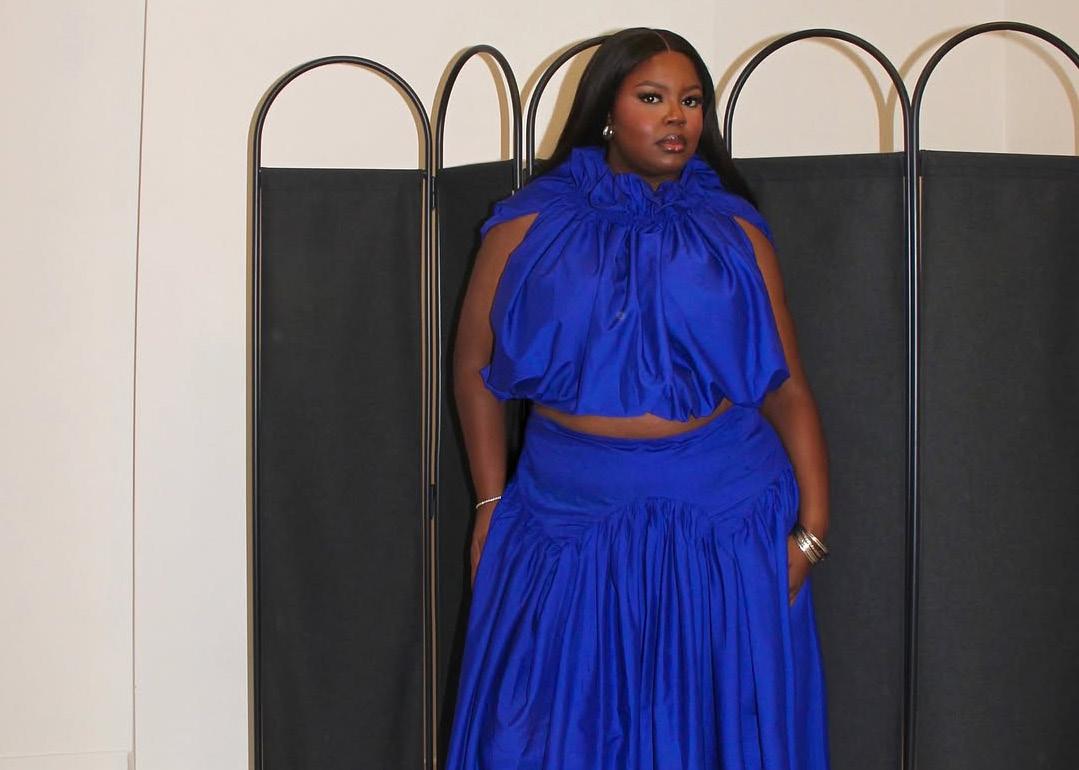

2

NYOSI is a delicate rebellion. Designer Vanessa Iloenyosi curates pieces that honour craftsmanship while embracing contemporary femininity. The brand’s detail-rich silhouettes and ethereal textures carry a poetic aura, clothing that feels both empowering and vulnerable. NYOSI whispers rather than shouts, but its presence is undeniable, offering a refreshing take on underground Nigerian womenswear. Vanessa’s vision seamlessly bridges art and fashion.
4

GAEA LUMI, helmed by Ayakeme Udokang, fuses futuristic tailoring with an earth-conscious ethos. The brand explores the relationship between humanity and nature, often using organic inspirations to inform its design lines and textures. Its aesthetic is minimal yet impactful, bold in concept, and subtle in execution. GAEA LUMI thrives as a visionary label and part of Nigeria’s eco-conscious underground movement, carving its place on the global stage.

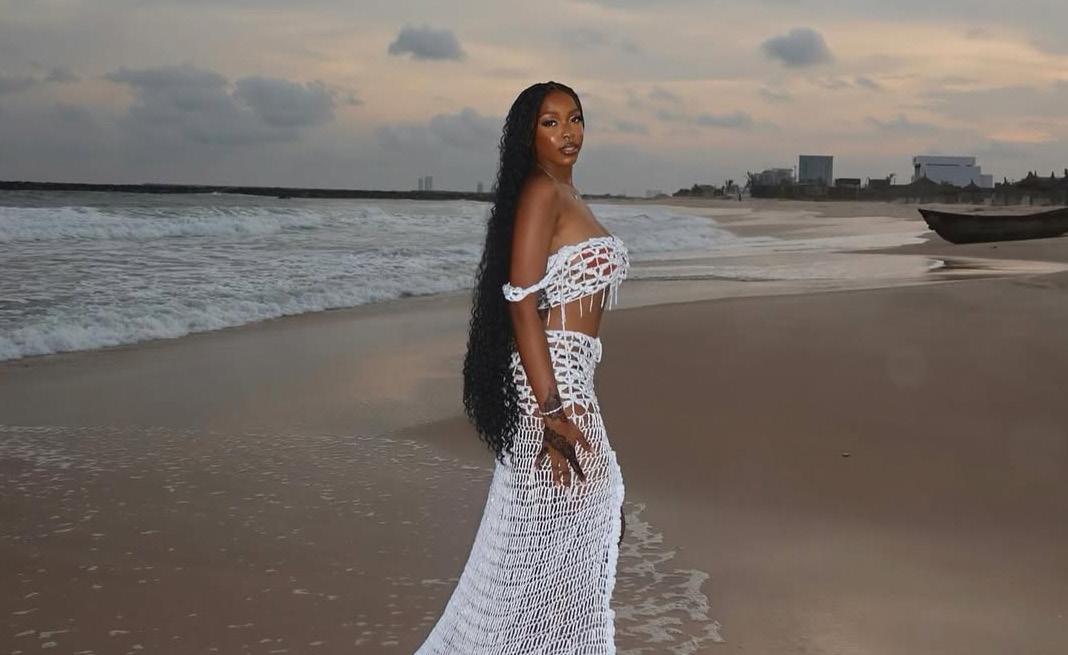
Kiki Kamanu is a bold Nigerian-American fashion designer known for her fearless, eclectic style that blends global influences with African heritage. Her eponymous brand champions individuality, creating vibrant, handcrafted pieces that fuse contemporary cuts with Ankara, pop-art, and unexpected detailing. Kiki’s designs celebrate self-expression, diversity, and confidence, attracting fashion lovers and celebrities who embrace statement-making originality.
Pepper Row is vibrant, eclectic, and unapologetically African. Omafume Niemogha draws heavily from folklore, craftsmanship, and cultural narratives, often highlighting handwoven textiles and artisanal detail. The label exudes playfulness but with a serious dedication to sustainability and heritage preservation. Pepper Row’s designs are not just clothes; they are wearable stories, connecting generations while paving a path for ethical Nigerian fashion globally. 7 9
E.S.O by Liman is a marriage of tradition and modernity, where northern Nigerian heritage finds expression in sleek, urban tailoring. Designer Tunde Shoremekun highlights culture with subtle embroidery, fabric choice, and silhouette, all of which nod to identity without losing global appeal. The brand’s understated luxury has earned it recognition within underground circles, appealing to fashion lovers who crave sophistication with an edge.
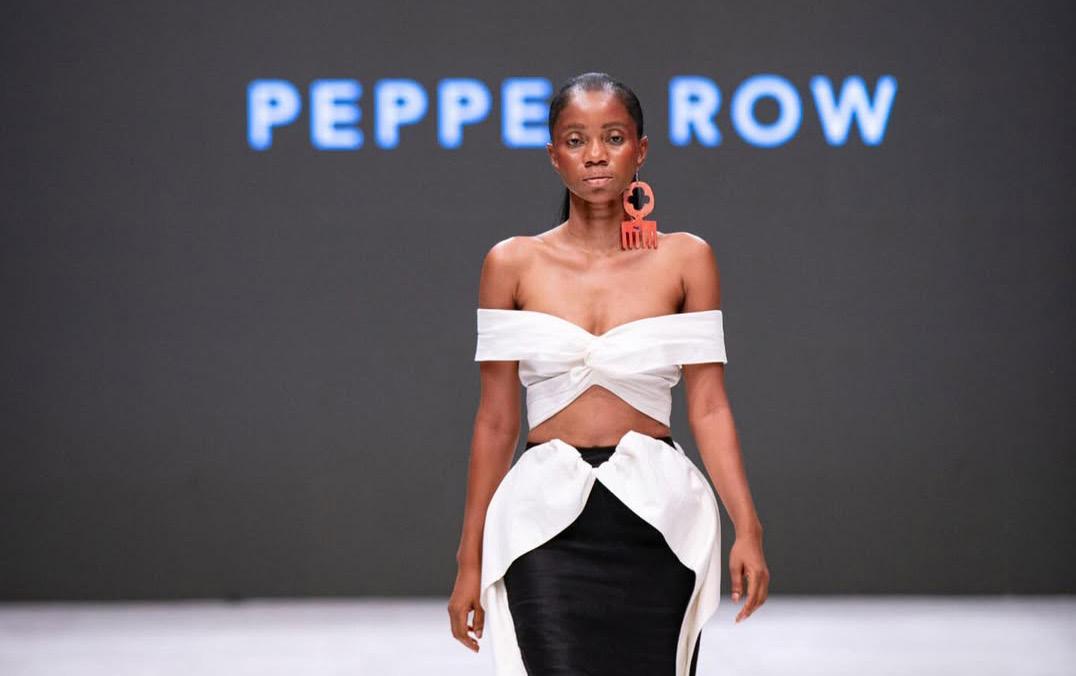
Ajanee Studios, led by Luqman Ajani, is all about storytelling through tailoring. His aesthetic embraces minimalism infused with bold design twists, unexpected cuts, clean palettes, and architectural forms. Ajanee’s underground appeal lies in his ability to merge simplicity with striking visual statements. His brand embodies Lagos’s modern creative wave: versatile, intelligent, and deeply connected to youth culture.
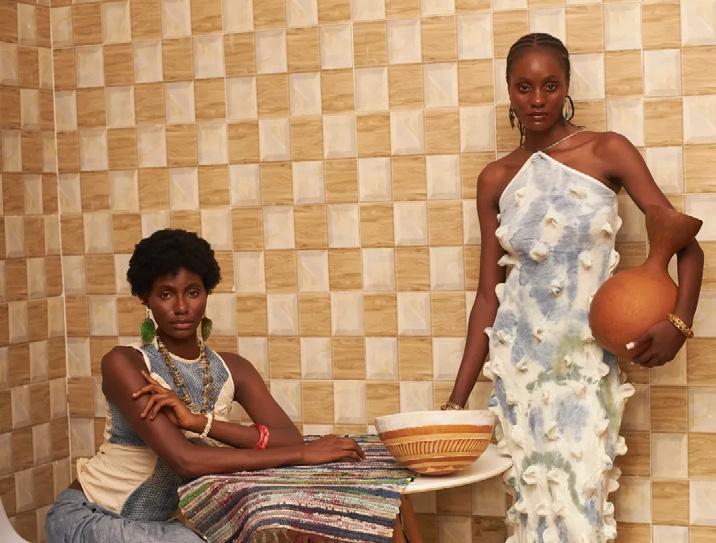

6 8
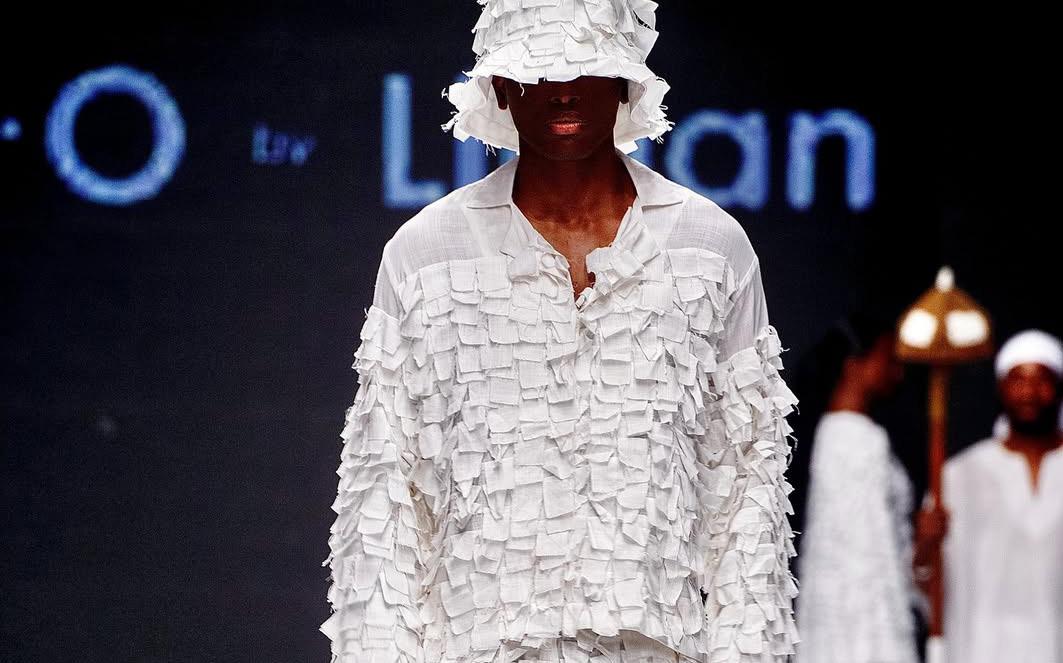

Pettre Taylor, founded by Peter Oroja Acha, celebrates craftsmanship with a refined, contemporary lens. Known for his precision tailoring and elegant finishes, Oroja’s work elevates Nigerian menswear, offering versatile pieces that move from casual to luxe effortlessly. Though underground, Pettre Taylor reflects a mastery, patience, and stylistic maturity that place it firmly among Nigeria’s rising names. His vision speaks to timelessness in a fast-moving world.
By Chef Mendal Chef and Founder, The Mendal Experience
Ingredients:
Lemon Curd
100 g caster sugar
1 tbsp lemon zest
3 egg yolks
50 ml fresh lemon juice
50 g unsalted butter
Vanilla Crémeux
15 g cold water
3 g powdered gelatin
200 g whipping cream
½ tsp vanilla extract
57.5 g egg yolks (about 3)
60 g caster sugar
Pinch of salt
Oatmeal Crumble
50 g cold unsalted
Instructions:
Lemon Curd
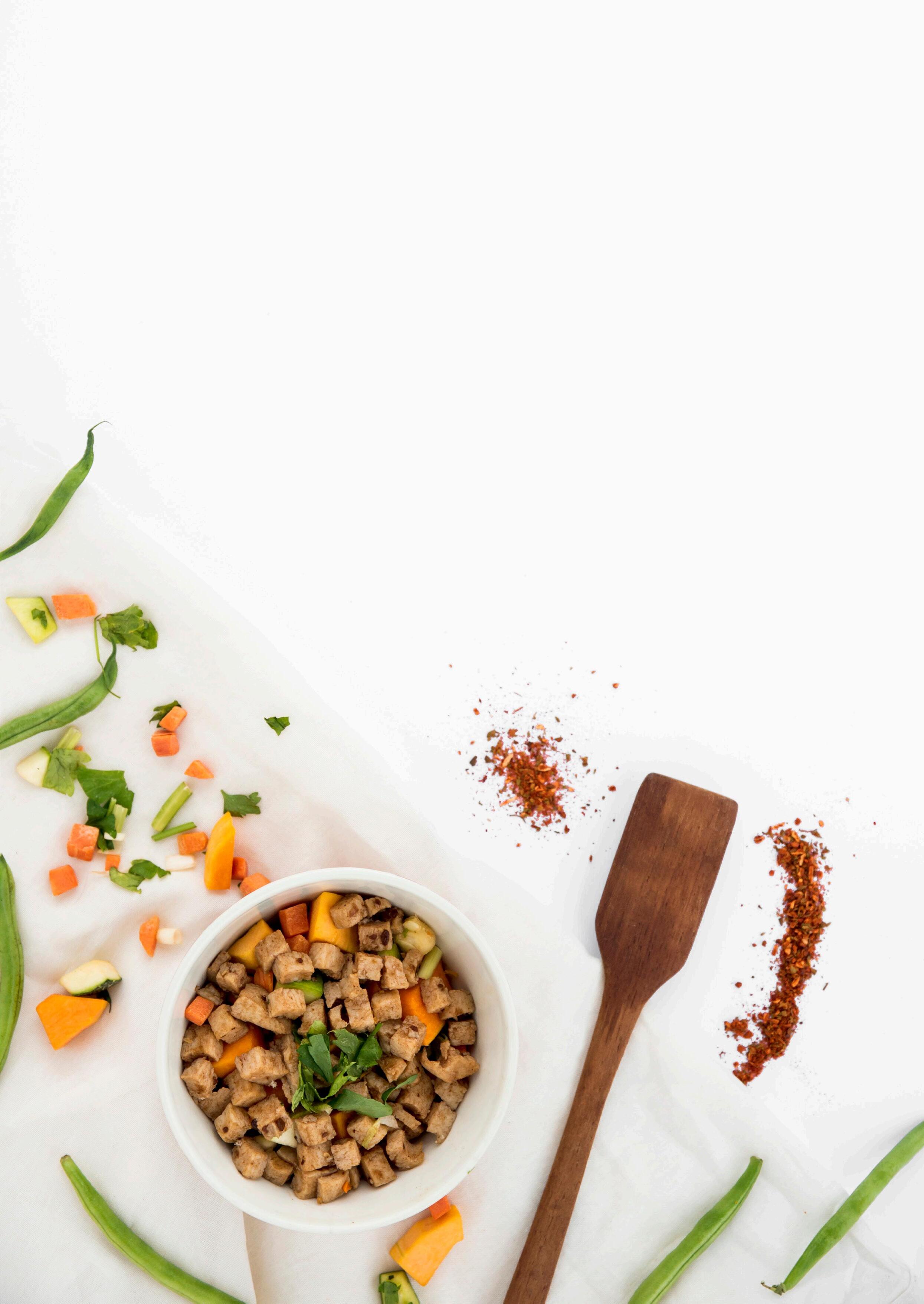
A refined marriage of rich dark chocolate cake and tangy lemon curd, paired with rustic oat crumble and a silky vanilla crémeux. This dessert balances bold flavours with delicate textures, perfect for those who love depth and contrast in every bite.
Serving of 8
butter, cubed
60 g plain flour
40 g brown sugar
Pinch of salt
1 tbsp rolled oats
Dark Chocolate Cake
75 g dark cocoa powder
400 g caster sugar
230 g plain flour
½ tsp baking powder
½ tsp baking soda
½ tsp salt
2 large eggs
250 ml hot espresso (freshly brewed)
250 ml milk
125 ml vegetable oil
½ tsp vanilla extract
1. In a heatproof bowl, whisk together sugar, lemon zest, egg yolks, and lemon juice.
2. Place over a saucepan of simmering water (bain-marie) and whisk continuously until the mixture thickens and coats the back of a spoon (about 8–10 minutes).
3. Remove from heat and whisk in the butter until smooth.
4. Cover with cling film (touching the surface) and chill until set.
Vanilla Crémeux
1. Bloom gelatin in cold water for 5 minutes.
2. In a saucepan, heat cream and vanilla until just steaming (do not boil).
3. In a separate bowl, whisk egg yolks, sugar, and salt.
4. Slowly temper with the hot cream mixture.
5. Return to the saucepan and cook over low heat, stirring, until it reaches 82–84°C and thickens slightly.
6. Remove from heat, add bloomed gelatin, and stir until fully dissolved.
7. Strain, cover, and chill for at least 4 hours until set.


Oatmeal Crumble
1. Preheat oven to 170°C.
2. Rub cold butter into flour, sugar, salt, and oats until mixture resembles coarse crumbs.
3. Spread on a lined baking tray and bake for 12–15 minutes, stirring once, until golden.
4. Cool and crumble lightly.
Dark Chocolate Cake
1. Preheat oven to 175°C.
2. Grease and line a 9-inch cake tin.
3. In a large bowl, sift cocoa, sugar, flour, baking powder, baking soda, and salt.
4. In another bowl, whisk eggs, milk, oil, and vanilla. Add to dry ingredients and mix until smooth.
5. Carefully pour in hot espresso and mix until the batter is thin and glossy.
6. Pour into prepared tin and bake 35–40 minutes, until a skewer comes out clean.
7. Cool completely before slicing.
Chef’s Note: The boldness of dark chocolate is lifted by the brightness of lemon curd, while the oat crumble brings a rustic crunch. Best served chilled or lightly cool for maximum flavour contrast.
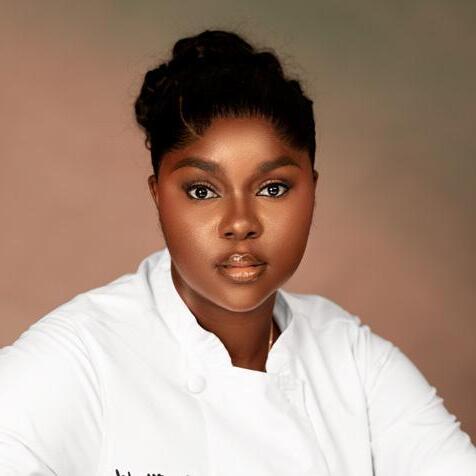
CHEF BIO
Gbemisola Roberts is a Nigerian chef and a culinary creative reimagining West African flavours through a modern fine-dining lens. Founder of The Mendal Experience, she is known for transforming familiar ingredients into elegant, creative dishes that celebrate culture and innovation.
By Chef Mendal Chef and Founder, The Mendal Experience
Ingredients
Chocolate Sponge Cake
4 eggs
100 g caster sugar
3 g vanilla extract
30 g plain flour
30 g cocoa powder
¼ tsp baking powder
⅕ tsp baking soda
Cream Cheese Frosting
120 g dark chocolate, melted
80 g whipping cream (for melting chocolate)
150 g cream cheese
30 g icing sugar
8 g cocoa powder
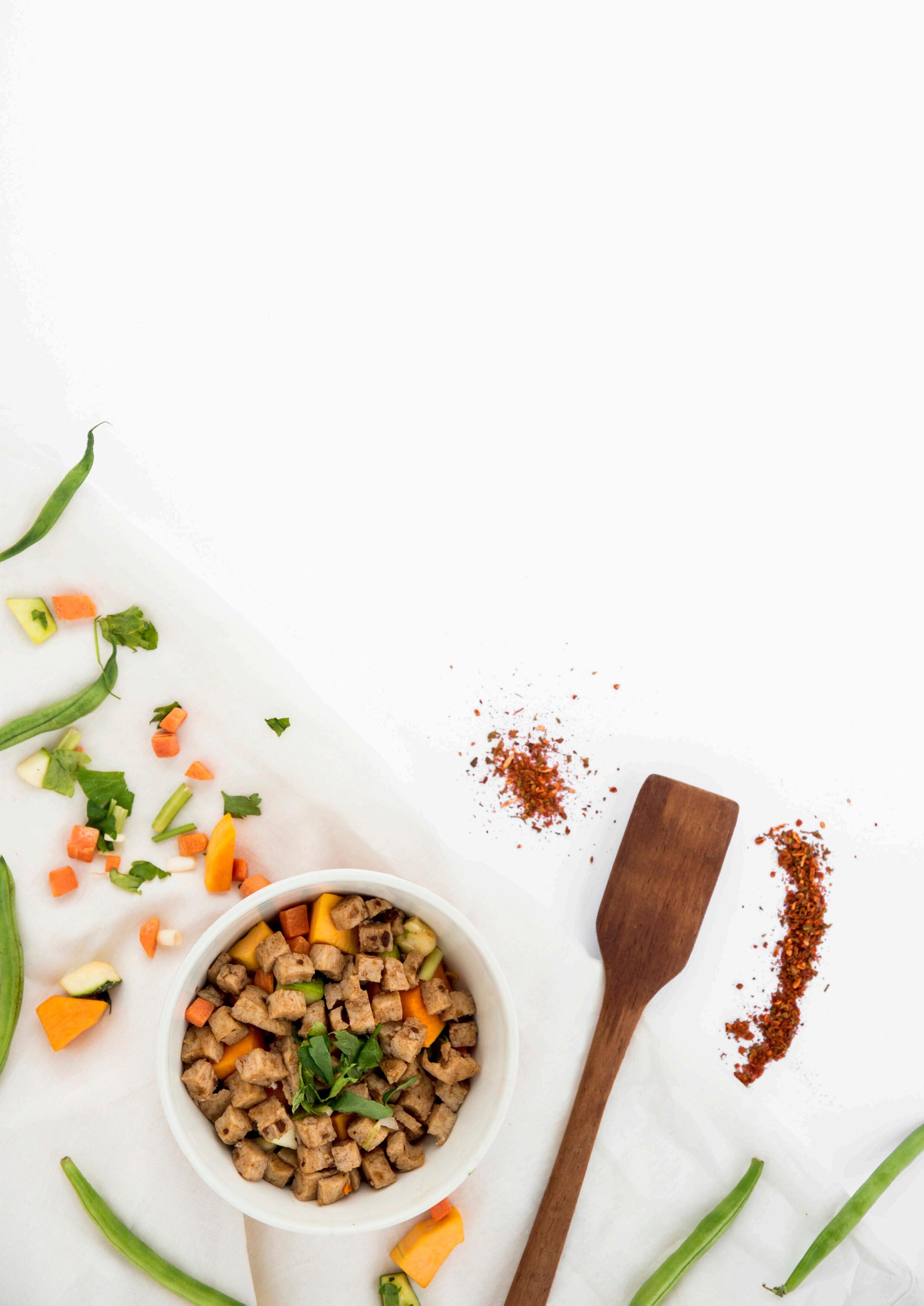
20 g whipping cream (for lightening texture)
Chocolate Ganache
200 g dark chocolate
200 g whipping cream
Chocolate Soil
70 g butter, softened
40 g caster sugar
100 g cocoa powder
3 g salt
24 g egg white
To Serve
Fresh strawberries, halved Good-quality vanilla ice cream
A playful yet refined dessert featuring delicate layers of chocolate sponge, rich cream cheese frosting, and a silky ganache. Paired with a rustic chocolate soil, fresh strawberries, and vanilla ice cream, this dish balances decadence with freshness.
Serves: 6–8

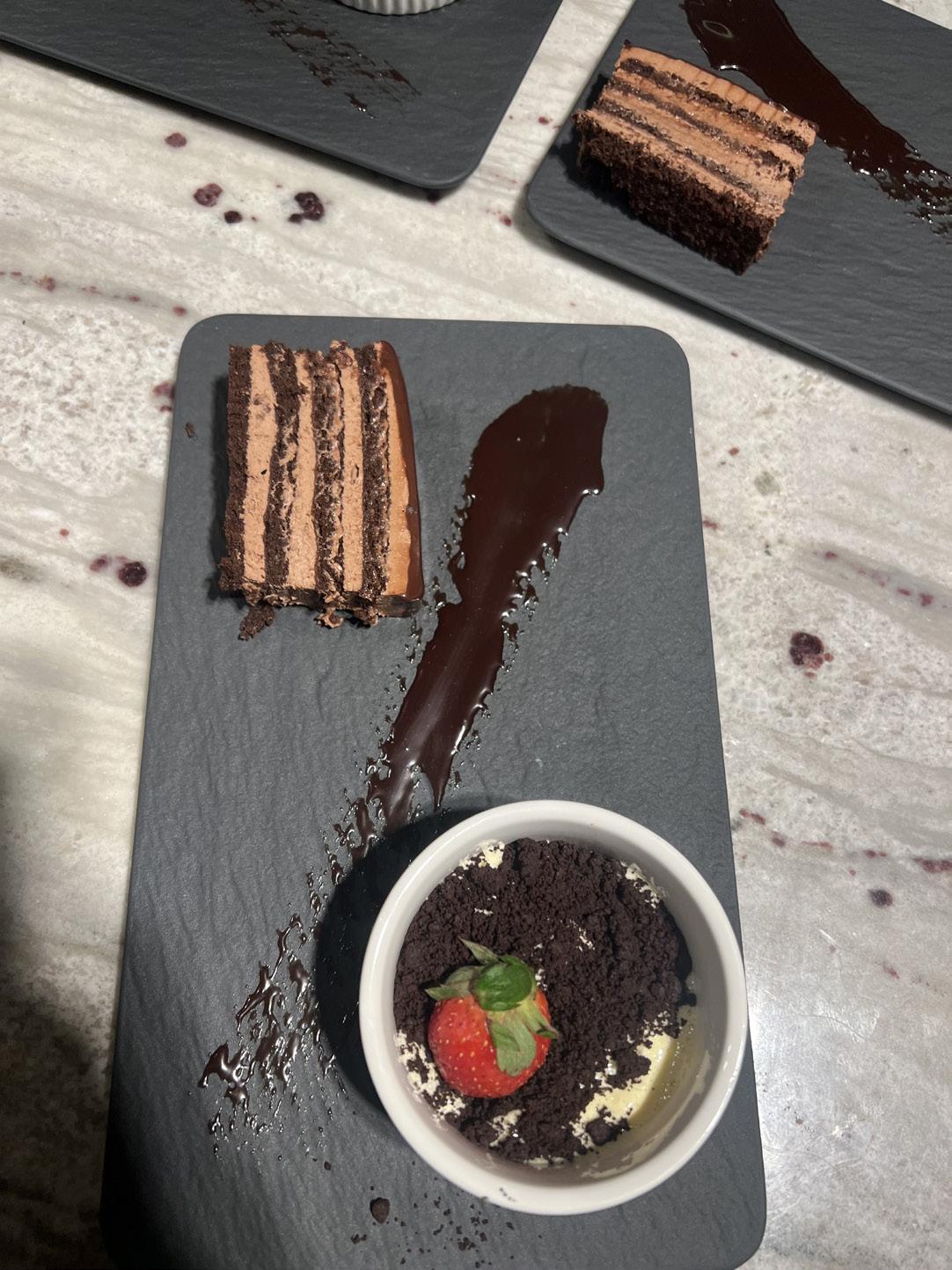
Method
Chocolate Sponge Cake
1. Preheat oven to 175°C.
2. Line a 20 cm (8-inch) round cake tin.
3. In a bowl, whisk eggs, sugar, and vanilla until light and fluffy.
4. Sift together flour, cocoa, baking powder, and baking soda.
5. Gently fold dry ingredients into egg mixture until just combined.
6. Pour batter into tin and bake for 18–20 minutes, or until springy to the touch. Cool completely, then slice into 2–3 layers.
Cream Cheese Frosting
1. Heat 80 g cream, pour over melted chocolate, and mix until smooth.
2. Cool slightly.
3. In another bowl, beat cream cheese with icing sugar and cocoa powder until smooth.
4. Fold in the chocolate mixture, then add 20 g whipped cream to lighten.
5. Chill until spreadable.
Chocolate Ganache
1. Heat cream until steaming, pour over chocolate, and let sit for 2 minutes.
2. Stir until smooth and glossy.
3. Set aside to cool slightly before use.
Chocolate Soil
1. Preheat oven to 160°C.
2. Mix butter, sugar, cocoa powder, and salt until crumbly.
3. Add egg white and stir until sandy.
4. Spread on a tray and bake for 15 minutes, stirring once, until crisp.
5. Cool and crumble.
Chef’s Note: The tang of cream cheese frosting cuts through the richness of chocolate, while the strawberries and ice cream add freshness. Best served immediately to enjoy the contrast of warm cake and ice cream.




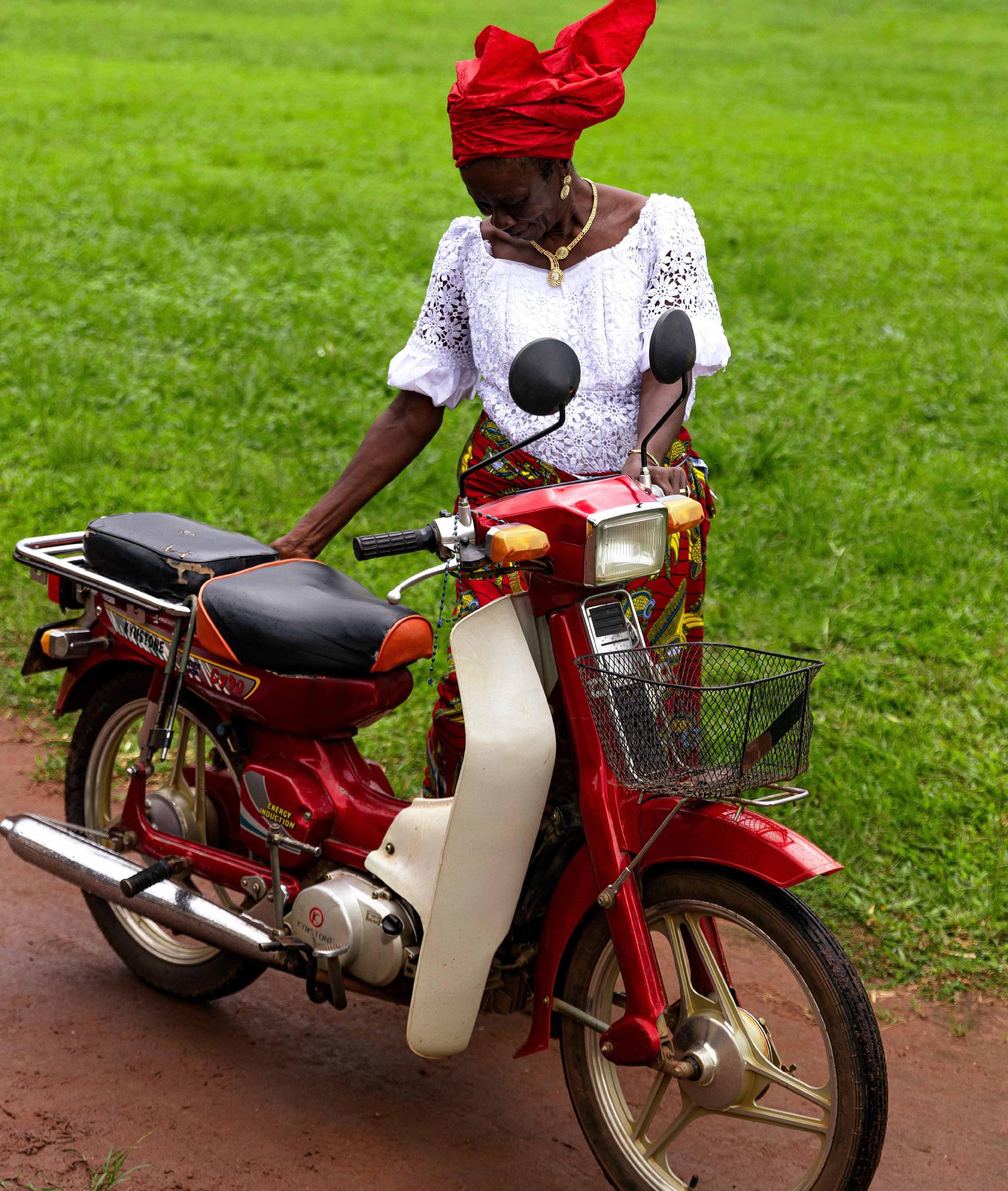
Her beauty travels wide..
Ridwan Salam is a documentary photographer and visual storyteller based in Nigeria, with a deep passion for humanity, diverse locales, and various cultures. A proud member of the African Photojournalism Database (APJD), Ridwan embarked on his photographic journey driven by a fervent interest in capturing the essence of people, places, and cultures. Over time, he has honed his craft, traversing numerous states, cities, towns, and villages across Nigeria to vividly narrate the captivating and rich stories of everyday Africans. Ridwan firmly believes in the transformative power of photography to instigate positive change. His mantra encapsulates the idea that while he may not alter history, he can certainly unveil it through his lens: “I can’t change history, but I can show it.”
IG: @ridwannsalam





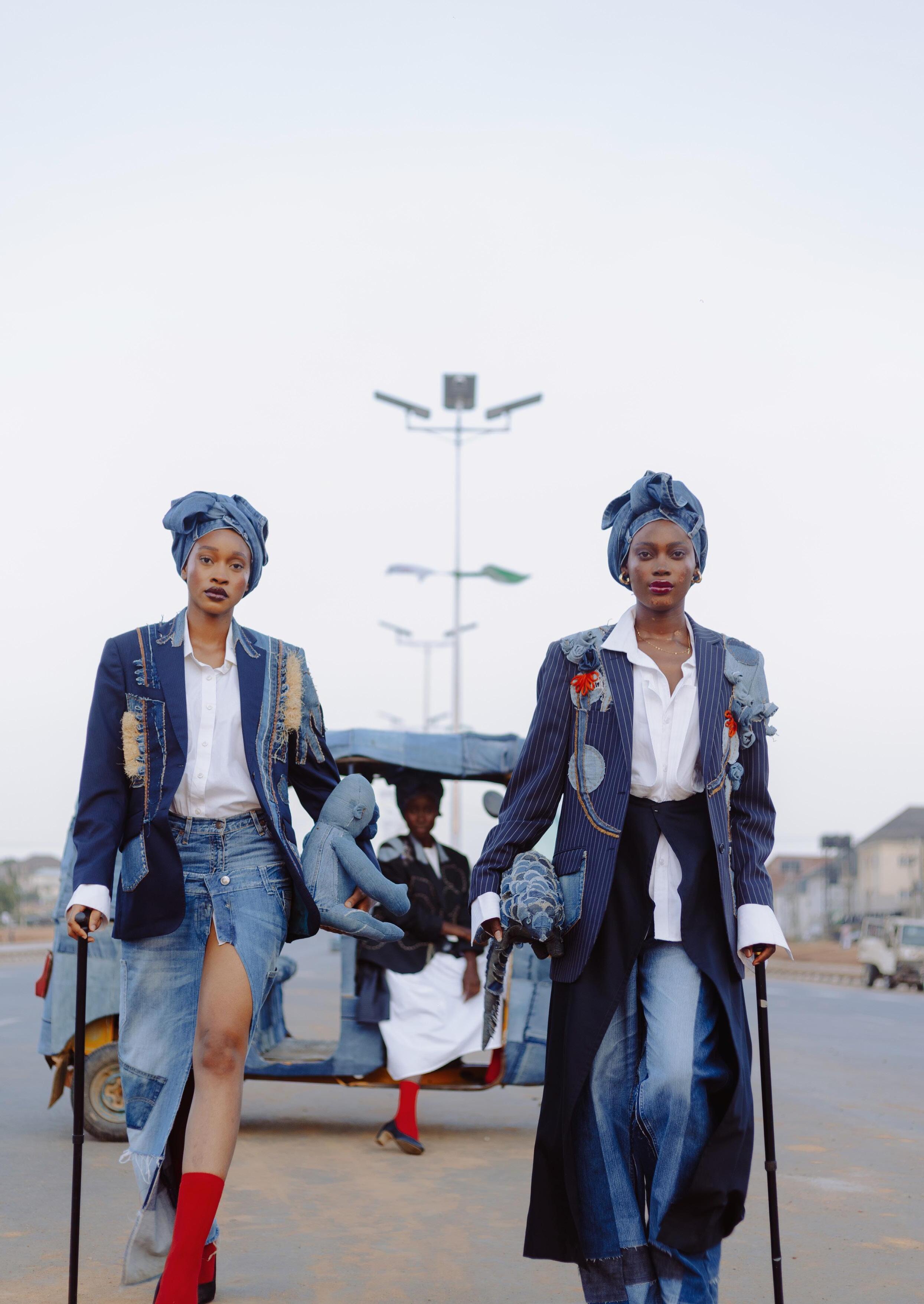


By Efayy Writer IG: _Efayy
Unless you have been living under a rock, you must have come across the stunning pictures of Mr Eazi and Temi Otedola’s wedding.
Inevitably, what comes with major internet news like this is often a wave of unsolicited think-pieces from everyone and their mums. If there is one thing being on the internet has taught us, it is that we are all apparently friends and family to the 5.6 billion users, and we know the intricacies of each other’s lives.
So, what is a little commentary or two?
But the thing with such commentary is that it can turn sour easily, like a pot of soup left out during Harmattan.
I was on my bed, scrolling through Instagram on what was supposed to be a public holiday last Friday, when I saw the pictures. Looking through, I saw something that caught my eye: a picture of Temi wearing an Okuku (a traditional head adornment worn by Edo/Benin brides). As you may know, Temi Ajibade is Yoruba.

I knew it would not be long until the cultural gatekeepers came for her, and I was right. Every time the picture resurfaced, it was met with comments like: “I did not know Temi was from Benin” or “Why is she dressed in Edo attire if she is not an Edo bride?”
This reminded me of a similar situation where a user on X (formerly Twitter) declared that only Yoruba brides are allowed to wear AsoOke. If you think having a Yoruba husband makes you an exception to this rule, then I am afraid you have been deceived, because it apparently does not.
As an aspiring, reasonable person, I try to look at these sorts of arguments from both perspectives to gather a balanced view. So, I wanted to know why some Nigerians are so keen on preventing fellow Nigerians from adopting parts of their culture. My first thought:

the gatekeepers are probably afraid of cultural appropriation.
This has been an infamous outcome in situations like this, especially when the borrowers of the culture popularise it to an extent that people mistake them for its pioneers. Scary, I know. But just because it might rain does not mean we should stop putting our clothes out to sun-dry.
I think we underestimate how divided we are, or maybe we are aware but do not care enough. Nigerians in the South seem to know little about the lives of Nigerians in the North. I experience this when I travel to my home state of Edo, and my family there experiences culture shock from my way of life.
And let’s not even begin to dissect the polarised view that our very own ‘Americans’ (those who live in Lagos) have of the rest of the country, often using the standard of living there as the yardstick for the other 35 states.
All this is to say that Nigeria needs as much integration as it can get. If it begins with one of your favourites borrowing the fashion style of another tribe, so be it.
We cannot say we want ‘One Nigeria’ while actively gatekeeping parts of our cultures that prevent that integration. And this is why I, Efe, a self-acclaimed true representation of the Nigeria we all aspire to, will be giving my children Yoruba names, whether their father ends up being Yoruba or not. Hausa and other Nigerian languages will also be a must
We should all be like Efe.
By Omobolaji Wuraola Quadri Account Executive
IG: @Bolaji.q
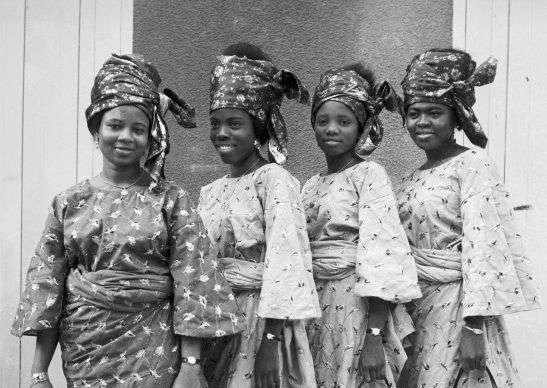
FFashion in Nigeria takes me back to my childhood. Sundays felt like a fashion contest. Women would arrive in iro and buba, their gele tied high like crowns, while men carried themselves in agbada that seemed to move with the wind. Clothes were not just outfits; they were symbols of pride, heritage, and belonging.
My grandmother always said, “Your clothes speak before you open your mouth.” Back then, I did not understand, but now I see how true it is. Fabrics like aso oke, akwete, adire, and ankara have always carried meaning. A certain pattern tells a story; white lace might symbolise honour, and aso ebi at weddings tells of unity. Fashion in Nigeria has never been silent; it has always spoken.
Those fabrics are part of my own story, too. Not long ago, I took one of my grandmother’s aso oke wrappers and her ipele pieces she wore proudly in her time and reimagined them into cargo trousers for myself. At first glance, it felt bold, turning something traditional into something urban and playful. But when I wore it, I realised I was carrying her history while writing my own. That is what Nigerian fashion does: it bridges generations.
Today, those same traditions are not only alive but thriving. The Nigerian fashion industry has stepped boldly onto the global

stage. Designers such as Michelle Adepoju, Lisa Folawiyo, and Emmy Kasbit have shown the world that our fabrics are more than just cloth; they are identity, artistry, and innovation. Adire, once tied and dyed in local courtyards, is now showcased on international runways. Ankara, once thought of as everyday wear, now travels across continents, carrying Nigerian stories into spaces far beyond Africa. This is the success of our fashion: staying true to ourselves while finding a global voice.
What I love most is how the younger generation blends tradition with modernity. We are not afraid to experiment. Just as I turned my grandmother’s aso oke into cargo trousers, others turn aso oke into jackets, pair gele with denim, or style agbada with trainers. These fusions prove that African fashion is not frozen in time; it grows with us, adapting to the present while holding on to its roots.
To dress as a Nigerian today is to live in two worlds at once. It is to carry the echoes of our grandparents’ wardrobes while creating new meanings in the 21st century. It is proof that fashion here is more than trends; it is memory, culture, and pride stitched into every seam. When I wear Nigerian fabrics, I do not just see colour and pattern; I see history and craftsmanship.
By Elvis Dante Osifo Editor In Chief, Lost In Lagos Plus Magazine
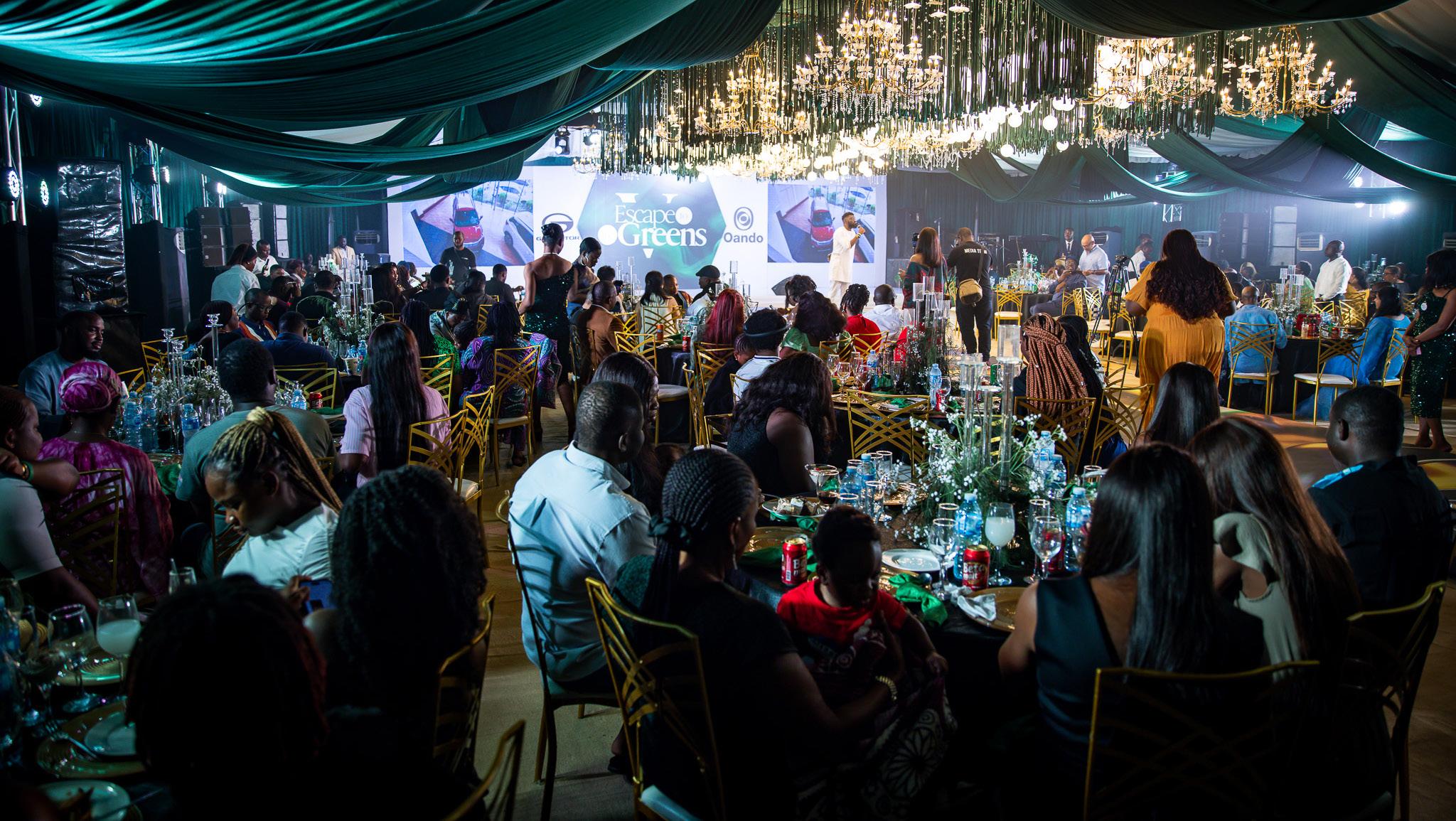

I’d I’d heard about a luxury residential golf and country estate tucked away in Ibeju Lekki, but it wasn’t until a recent weekend that I finally discovered what all the quiet buzz was about. I went in thinking it would be just another Lagos escape; maybe a chance to get some work done in peace, but what I got instead was an unexpectedly decadent, soul-lifting experience that made September rival Detty December.
The journey began at the gate, where a polished security detail inspected our car before letting us through. Then another checkpoint. And another. I finally looked up from my laptop, curious: what kind of paradise required this much screening? As we drove further, the narrow road finally gave way to one of the most beautiful landscapes and golf courses I’ve ever seen, then I had my answer. Before us stretched rolling emerald fairways, tranquil lakes, and soft mounds of manicured grass that shimmered in the sunlight. It was breathtaking. The landscape looked painted by serenity itself. This was when my curiosity and anticipation heightened.
Lost in awe, I didn’t realise we had gotten to the entryway of our lodge until the Porters knocked politely on the car window, offering to help us carry our luggages. As soon as I stepped out of the car, it hit me. The air here felt calmer, fresher, lighter: a clear distinction from the hot, soot-filled Lagos traffic air. We checked in at the Lodge on 18, which I think was a brilliant and fun play with words. It was the Corporate Lodge and featured lodging, a restaurant, and ondemand bicycle pickup. The front desk area opened beautifully to a very large foyer. The architecture and interior design were stunning and artistic, with portraits and murals beautifully placed, all the way to the upstairs waiting room. The Corporate lodge also had meeting rooms, board rooms and luxury suites in which we stayed. Ours was especially premium: polished wood finishes, plush bedding, a bathroom straight out of an architectural digest spread. The room exuded calm professionalism, the kind that makes you want to stay productive even while unwinding.
“Escape to the Greens” was born from the idea of celebrating everything Lakowe Lakes represents: community, leisure, and lifestyle. This year’s edition was particularly exciting because they expanded the program to be more inclusive and dynamic. In addition to the golf classic (their signature golf tournament, which attracts over 200 players and professionals from all over West Africa). This

year was Lakowe Lakes Golf Classic’s 10th, so they introduced new highlights to add colour to the experience.
The first was the Verse & Vibe Night. It was the opening night, and it started with welcome canapés and cocktails. It had electrifying performances: tap dance, contemporary, jazz and a personal favourite for the night, spoken word poetry by IBQuake. If I’m to be honest, the reason it’s a favourite is because, other than how powerful it was, it was around the time when the buffet was officially open. The buffet had some of the most varied selections from the continents. So varied that people started getting creative with their plates. I’d told my date that a nice sub-activity would have been “most creative plate of the night.” A competition that I’d have won, no doubt.
After breakfast the next day, another buffet by the way, and by this time I was getting used to this as my life now, we headed out for the Poolside Pulse Party. In my white linen shirt and shorts, we went to the Revivo Sports Centre, which was transformed into a chic resortstyle playground. Hosted by Layi Wasabi and with DJ Nana on the booth, we were taken through Candle Making, Caricature, Sip and Paint and my favourite, Pottery. For someone who’d planned to work most of the weekend, I somehow managed to forget what “work” meant. We left the center with our arms full of handcrafted souvenirs when we ran into Karla Pelser, Lakowe Lakes’ General Manager of Hospitality, Brand & Guest Experience. So gracefully, she offered us a ride and spoke about how ETTG has grown from a niche gathering into a multi-day experience that attracts a diverse audience, becoming a platform for people to connect, recharge, and create memories in a unique setting. With this edition seeing Legacies & Lifestyle come to life: a signature real estate showcase with Mixta Africa that provides insight on how to become part of their exclusive community. She also shared how they have created experiences for different demographics, ensuring there’s something for everyone, from families to young professionals to seasoned golfers.
We soon got back to our Lodge on 18 and started getting ready— well I took a nap first—for the Royale Gala Dinner. The evening was chill and elegant. As soon as we crossed the bridge to The Island, where the event was, we came across a violin player serenading guests, as they made their way into the entryway. The setup was stylish, the service was courteous and experienced, and the overall

ambience was especially tasteful. MC Larry J steered the crowd into multiple rounds of laughter and applause, and Johnny Drille gave an electrifying performance that had everyone on their feet. The food and drinks of this evening, in particular, were beyond memorable. It was a feast across continents and cultures. There was so much attention to the details with the buffet that it made it multi-sensory. My eyes ate so much that my stomach was both eager and content. I’ve never experienced a more luxurious and intentional food curation in my many years in lifestyle. A 10/10 experience.
The next morning was the Laid-Back Brunch, a tasteful finish to a weekend of pampering. Everyone was connecting over coffee, pasta, oats and kebabs. Me? I connected with someone at the bread station debating between having a croissant and a Parisian baguette. The view was wonderful. It was bright and airy and felt like Easter Sunday
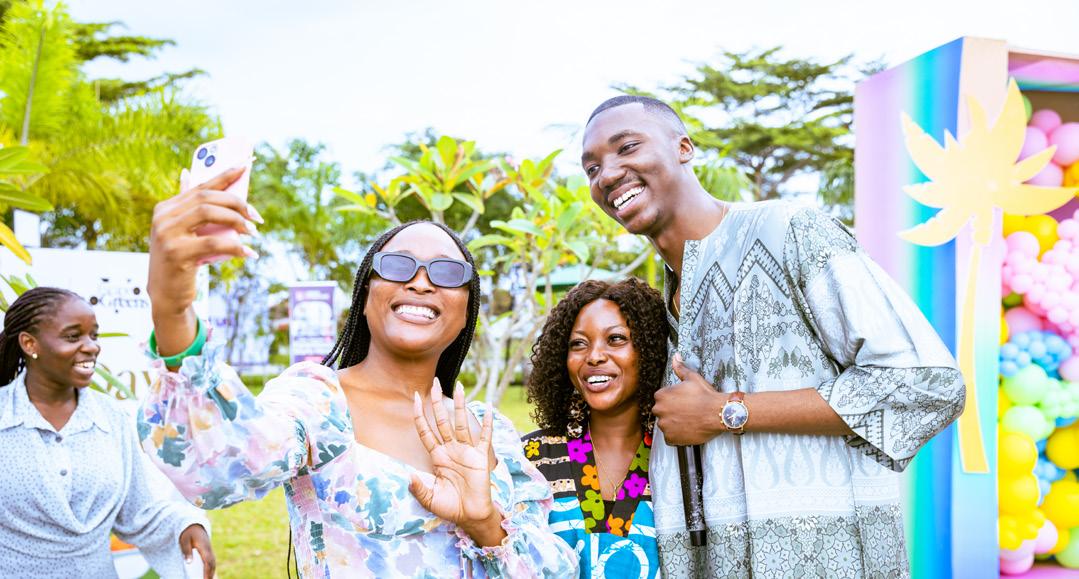
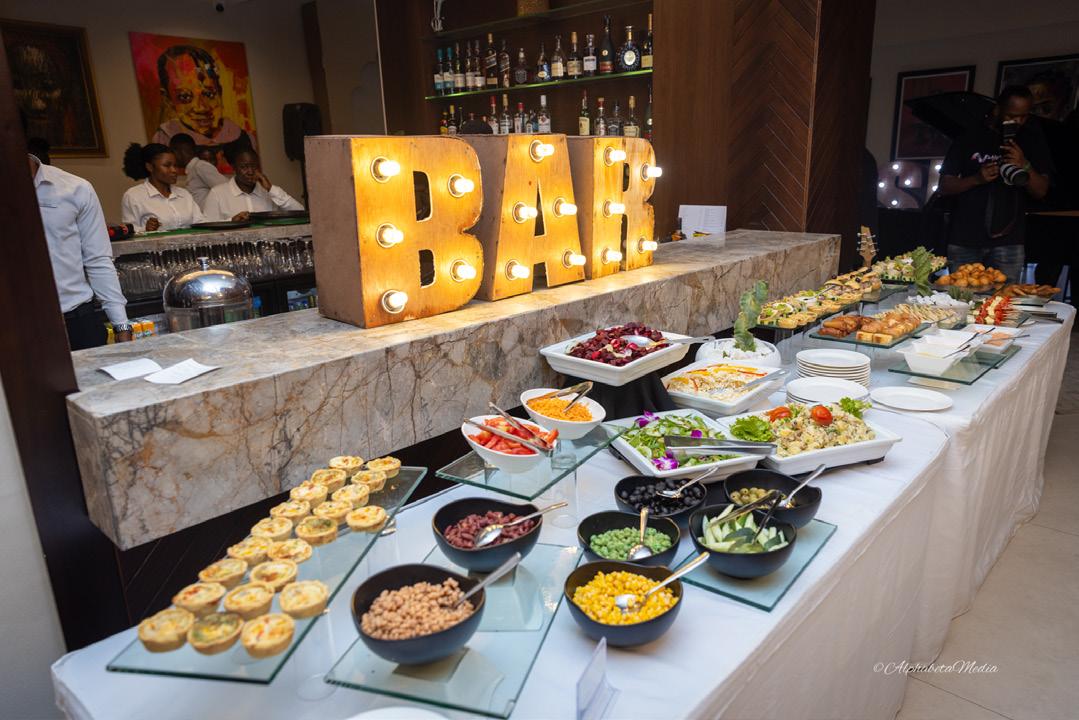

morning, but it was just Sunday. The brunch was at the Hole 18 Lawn, so we saw some golfers competitively trying to putt at hole 18.
Lakowe Lakes is a true blend of luxury, leisure, and community. It is more than just a golf estate; it’s a sanctuary where people can escape the busyness of city life and immerse themselves in natural beauty. Here, you will find world-class golf, wellness, outdoor recreation, fine dining, family-friendly activities, and real estate opportunities. It’s a place where residents and visitors alike can enjoy a holistic balance of relaxation, recreation, and connection. And with ETTG growing into one of West Africa’s most anticipated lifestyle gatherings, attracting international visitors while remaining rooted in our community spirit, I wouldn’t be surprised to see it rival many global sporting and luxury getaway events like those thrown every year in Lake Como, Monaco, or the French Riviera, yet remaining proudly, refreshingly, Nigerian.
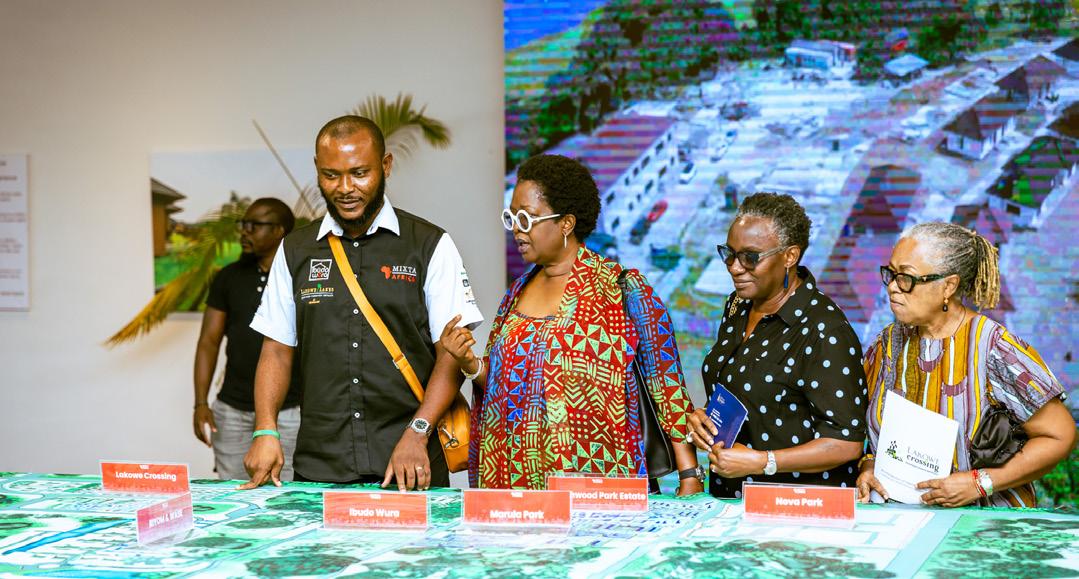
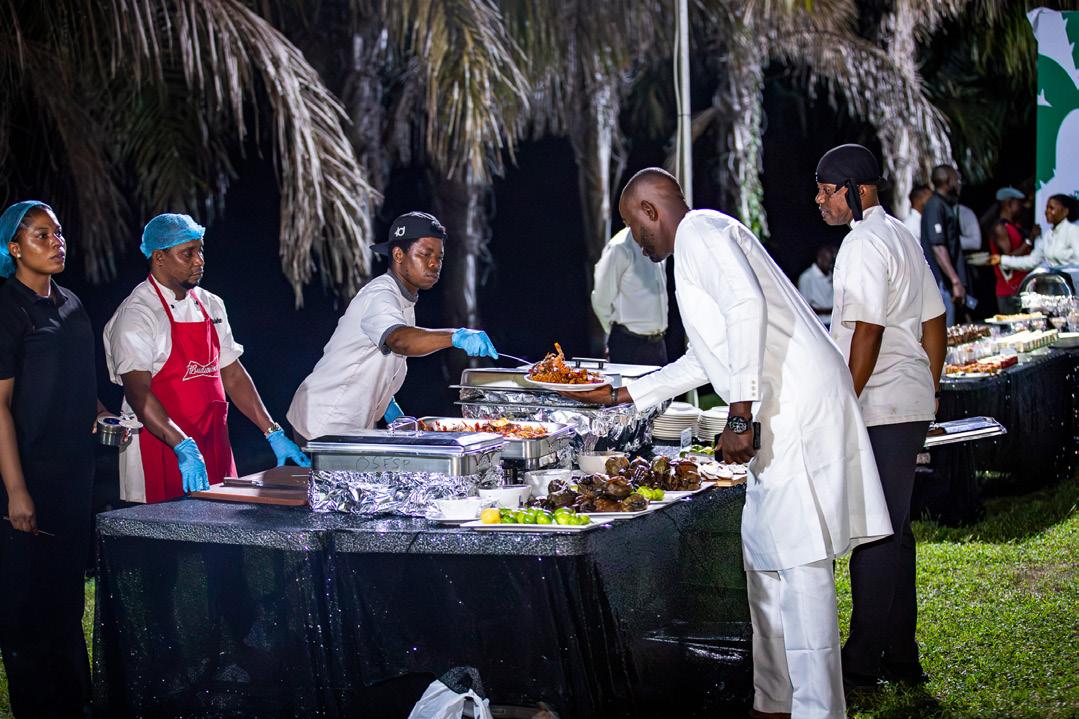
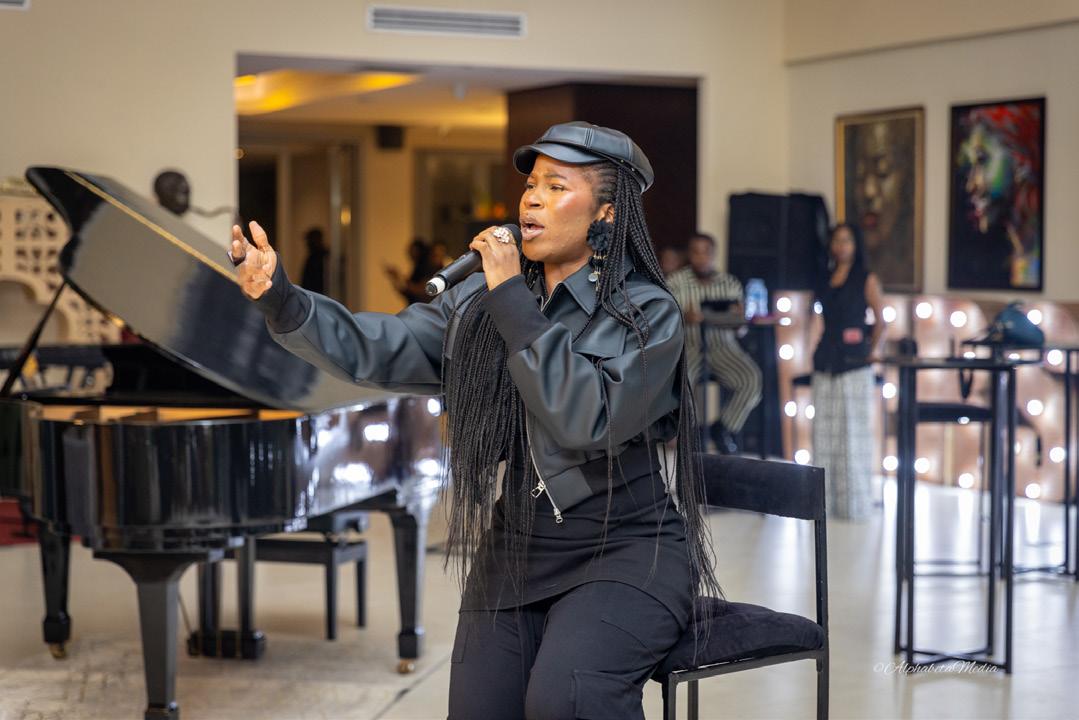
Comfort: 5/5 Quiet and airy, pampering and relaxing in all the ways that count
Service: 5/5 Informative, well-dressed and respectful staff
Overall Rating: ����������


Interview Mark Odiete Founder, Trax Apparel
‘‘ To me, fashionAfrican is too important to be reduced to a trend. Its identity deserves accuracy.
What does “African” fashion mean to you?
To me, African fashion is not just clothing; it is a cultural archive in motion. Every motif, every weave, and every dye process carries a story of where we come from. Its identity is worn on the body. At Trax, we see African fashion as a way to make culture unapologetically cool again, whether that is through hand-painted Dashikis, woven Aso Oke or Akwete, or our latest experiments like the Abiku SS26 collection, which reimagines old traditions in new forms. For me, “African” fashion means owning your roots while still walking confidently on global stages. It is proof that heritage is not static; it evolves, and we get to be its storytellers.
Your work creates “wearable declarations of identity.” What personal experiences fuelled your passion for using fashion as a powerful medium for African cultural expression?
Growing up in Warri and later attending school in Benin, I lived in a mix of cultures that were deeply traditional and original. The Edo people, for instance, wear their culture on their sleeves, still living in a monarchical system with stories dating back centuries. That shaped how I see the world. At the same time, I noticed how quickly people dismissed our local ways of dressing as “too traditional” or “not modern enough.” I did not want us to have to choose between being African and being stylish.
That is why when we launched our Walking Canvas collection, we wanted people to be visually intrigued by our stories, just as they are with Greek mythology or Japanese samurai. From the FESTAC ’77 Idia mask to the Yoruba Oduduwa mask, hand-painted boldly on kaftans and Dashikis, it felt like a declaration: this is us, bold and present. Since then, projects like Culture in Motion, our US pop-up tour, and Abiku SS26, inspired by reincarnation myths, have all been personal journeys for me. They are extensions of the same idea: making our culture visible, wearable, and impossible to ignore.


MWhat are the key systemic challenges that African designers face in sourcing materials and producing garments locally, and how do these challenges impact their ability to tell their stories?
The truth is, our creativity is endless, but our systems are broken. Accessing quality fabrics consistently, or even finding reliable production infrastructure locally, is tough. For example, when we wanted to produce Abiku SS26 using specific weaving traditions, timelines stretched because those skills still exist only in small artisan clusters. It is beautiful, but it is fragile. As a result, many African designers are forced to either import generic fabrics, which dilutes the story, or slow down production to stay authentic. At Trax, we lean into the harder path: working directly with local weavers and handpainters. It takes more time and patience, but the result is a piece that is not just fashion; it is a living artefact.

As African fashion gains global popularity, how can both designers and consumers distinguish between genuine cultural appreciation and harmful commercial appropriation?
The difference is context and credit. Appreciation is when you tell the full story, when you wear a Trax piece and know the motif comes from an Edo myth, or the weave is Yoruba Aso Oke. Appropriation is when those same elements are stripped of meaning and sold just because they look exotic. As designers, our role is to keep culture at the centre. That is why when we do Culture in Motion pop-ups abroad, we do not just sell clothes; we host conversations, music, and art around them. We give people the “why,” not just the “what.” For consumers, the responsibility is to ask: Do I know what this represents? Am I honouring it by wearing it? If the answer is yes, then it is appreciation. If not, then it is just commerce at culture’s expense.
By Ayodele Boluwatife Joy Jeweler @boluoffduty
Photocredit: e.pandashots

At a recent wedding in Lagos, the groom made his entrance in a flowing white agbada. But it was not the fabric that caught everyone’s attention; it was the cascade of beads around his neck, long strands of glass sugar beads with a bold pendant resting on his chest, matched with bracelets stacked neatly on his wrist. Once reserved for brides and titled men, beads have now become a striking part of the groom’s identity. In today’s Nigerian weddings, traditional beads are no longer just accessories; they are powerful statements of culture, pride, and style.
In years past, coral beads were the ultimate marker of status and heritage, worn mainly by brides, chiefs, and kings. Heavy, red, and bold, they stood as visible emblems of power and prestige. Today, while coral remains timeless, Nigerian fashion has widened its embrace. Beads now come in glass, stone, and crystal forms, offering colours and textures that tell new

stories of love and individuality.
This transformation is especially evident in men’s fashion. Grooms, once restricted to subtle chains or cufflinks, are now embracing beads with confidence. Whether it’s the classic coral, the luminous sugar bead, or a mix of stones layered into long necklaces, these accessories have become integral to their wedding look. The shift is not accidental; it reflects a broader cultural movement where fashion is deeply personal yet proudly rooted in tradition.
The beauty lies in versatility. Today’s grooms are not only wearing beads with agbadas or isiagu; some pair them with lace fabrics, ankara, or even fusion outfits that blend western tailoring with African embellishments. From earthy browns to emerald greens, from polished stones to matte finishes, bead makers are creating designs that honour heritage while speaking the language of modern style.
Beyond aesthetics, beads connect generations. Grandmothers see in them a continuation of traditions they cherished, while young couples find new ways to make those traditions their own. Each strand is more than decoration; it is a storyteller whispering of ancestry, wealth, and pride in identity.
In a global fashion industry dominated by Western jewellery, the rise of beads at Nigerian weddings sends a powerful message: our culture is not only relevant but also aspirational. Beads prove that true African fashion is not about copying trends, but about celebrating who we are.
As Nigerian weddings evolve, one truth shines through: beads are no longer quiet adornments. They are the crown jewels of our fashion narrative, rich in history, radiant in the present, and timeless enough to walk with us into the future.


Lost in Nigeria? No worries, as we’ve got you covered. Explore the diverse and captivating points of interest scattered across the country, curated just for you. Whether you’re seeking cultural immersion, outdoor escapades or culinary delights, we handpick a selection of upcoming experiences for you to discover and indulge in every month.
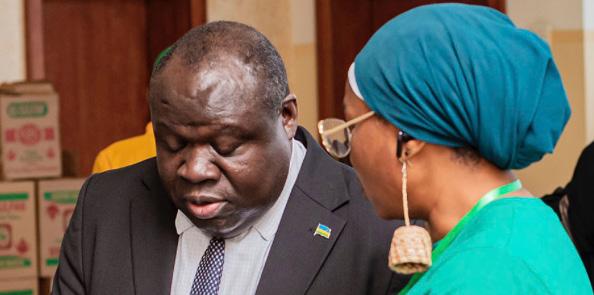
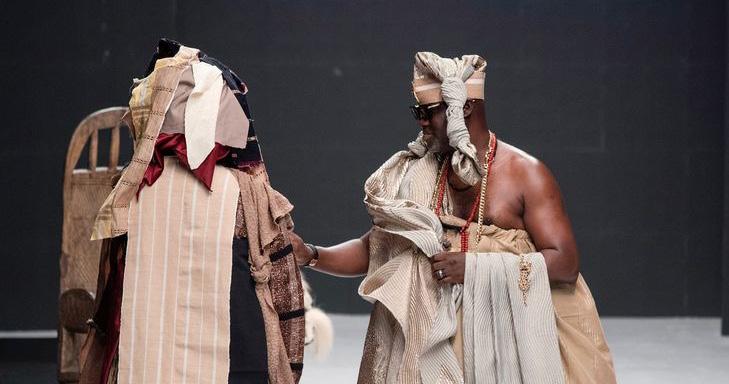
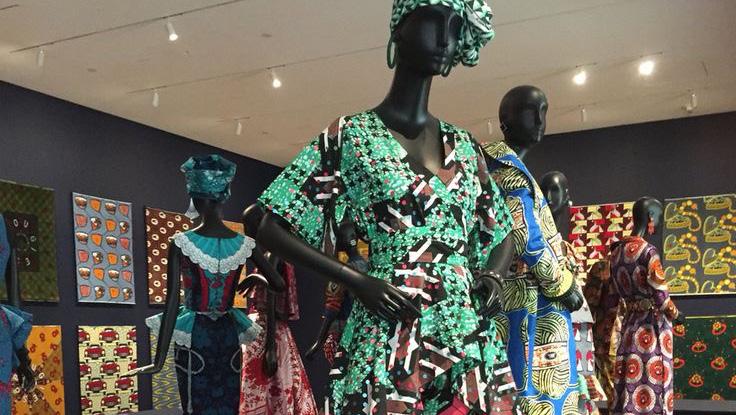
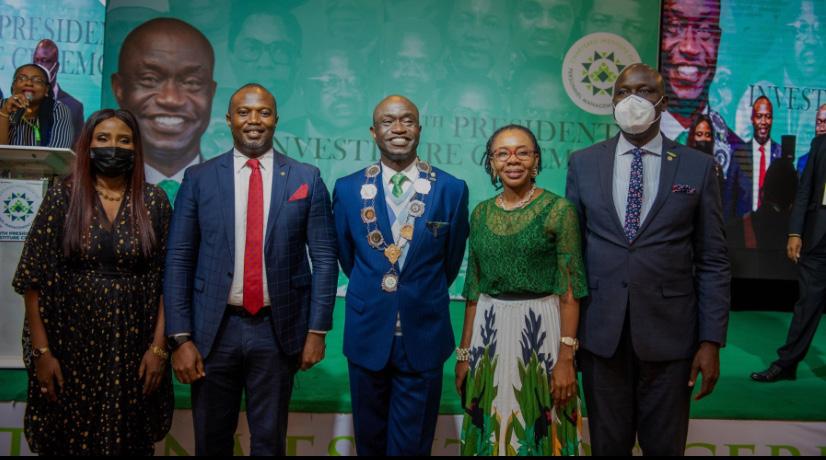


Nigerian International Tea Festival (NITF)
From bold tastings to immersive masterclasses and conversations that travel across continents, NITF is brewing a space for culture, community, and connection. This October in Abuja, the city becomes a hub of flavours and stories steeped in tradition and innovation. If you love discovery, if you crave connection, this is your seat at the table. Two days, infinite brews.
24th–25th October 2025 | Abuja
Lagos Fashion Week: the epicentre of style, where creativity meets culture, and the runway tells Africa’s stories. Lagos Fashion Week 2025 is where designers, dreamers, and disruptors converge. The city becomes a canvas, the lights a stage, and the clothes a manifesto. Come witness the energy, the artistry, the evolution. Lagos is calling, fashion is speaking, and the world is watching.
29th October – 2nd November 2025 | Lagos
The Tailoring Expo Abuja 2025
Abuja turns into the city of stitches as The Tailoring Expo brings craft and creativity together, where every thread tells a story. From bespoke showcases to industry talks and bold new designs, this is the gathering for tailors, fashion lovers, and innovators shaping the future of style in Nigeria. Come for the skill, stay for the vision.
23rd October 2025 | Abuja
CIPM International Conference Nigeria
‘Reimagining the New World of Work’ is more than a theme; it is the future unfolding. The CIPM International Conference gathers leaders, thinkers, and change-makers to explore how policy, people, and technology shape tomorrow’s workplaces. From visionary keynotes to practical strategy sessions, this is where the future of work in Nigeria and beyond is defined. If you are ready to lead, adapt, and transform, your seat is here.
27th–30th October 2025 | Abuja
DevFest Ebonyi 2025
The pulse of innovation is beating in Ebonyi as DevFest brings developers, creatives, and tech leaders together under one roof. From hands-on sessions to big-picture talks, it is a festival of code, community, and collaboration. Whether you are building your first app or scaling bold ideas, DevFest Ebonyi is the space to learn, connect, and grow with the people shaping Nigeria’s tech future. Don’t just watch the wave; be part of it.
20th September, 2025 | Jos, Plateau State


By Leon Izegbu Creative writer & Editor @Leon_thegodson
Sketches by: Moyosoreoluwa Christopher
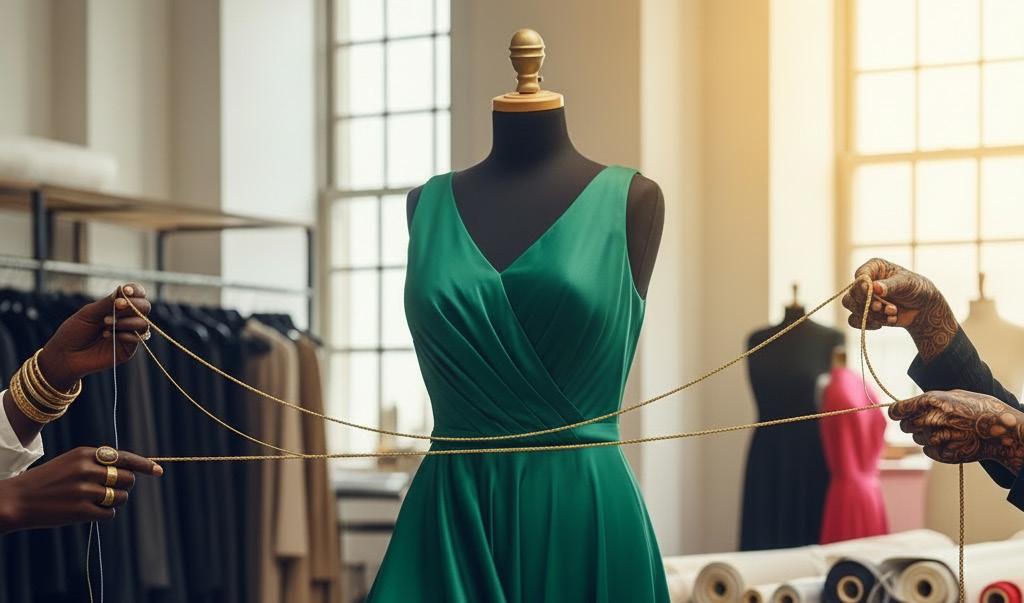
Every great creation begins with an idea, but in fashion, every great fit begins with a sketch. For Africans, and Nigerians especially, it is time to bring out the sketchbooks once more and redraw what it truly means to dress our identity. Fashion is more than aesthetics and vibes; it is a glimpse of heritage and a voice of culture. Yet in today’s world of fleeting global trends, the essence of African fashion often risks being overshadowed. To preserve our identity, we must return to the blueprint and reimagine style through the lens of authenticity.
For too long, the African wardrobe has been defined by a quiet tension between heritage and Western influence. In the bustling streets of Lagos, a vibrant Ankara print might be tailored into a sharp Savile Row-style suit, a beautiful compromise but one that often sees the African element playing a supporting role to a European silhouette. Now, a powerful cultural shift is underway, urging Nigerians and Africans at large to dust off their ancestral sketchbooks and redraw what it means to dress in their own identity. It is a call to move beyond assimilation and towards a bold reclamation of style. reclaiming style.
Thankfully, a vanguard of designers is leading this charge, proving that cultural authenticity and global appeal are not

mutually exclusive. Deola Sagoe has spent her career elevating Aso-Oke to couture status, creating breathtaking pieces that honour the textile’s regal origins. Similarly, Amaka Osakwe of Maki Oh consistently champions traditional Nigerian textiles like Adire, infusing them into contemporary designs that tell uniquely African stories on the world stage. These designers are not just making clothes; they are acting as cultural custodians, reminding us that our richest inspiration lies within.
Reclaiming the blueprint does not mean rejecting global trends, but rather ensuring that Africa’s voice is not drowned in the chorus of sameness. It is about teaching younger generations the swag and steeze in their grandmother’s wrappers, the pride in handwoven textiles, and the significance of patterns that speak louder than logos. By valuing and wearing our own heritage, we not only preserve culture but also create sustainable industries rooted in authenticity.
The task now falls to us all. To truly dress our identity is to wear our history with pride, to let the threads of our ancestors shape our modern silhouette. It’s time to stop borrowing from other people’s sketchbooks and start illustrating our own magnificent, authentic future.


By Jenny Onibode Writer & Creative Strategist
IG: @Jenny.Koko
The fashion industry is facing a reckoning. Once celebrated for its glamour and innovation, it is now under scrutiny for its impact on both people and the planet. From overflowing landfills to polluted rivers and overworked yet severely underpaid workers, the environmental and exploitative cost of fast fashion has become impossible to ignore.
Nigeria sits at the crossroads of this fashion crisis. Every week, millions of secondhand clothes, known as okrika, arrive in Lagos and Kano. At the same time, the country has also become a dumping ground for cheap fast fashion imports, flooding the markets with lowquality garments that fall apart after a few washes. These systems defy sustainability; they create waste problems, undermining our local textile industries and reducing the demand for Nigerian-made fashion. But in the face of this challenge lies a solution: upcycling.
Upcycling is the practice of transforming existing garments, textiles, or materials into something of higher quality or value. Unlike recycling, which often breaks fabrics down into lesser forms, upcycling elevates. It is fashion’s creative rebellion against waste, and if we are to imagine a future where fashion and sustainability can coexist, we must rethink not only how clothes are made, but also how they are valued. Upcycling offers that path forward. So how can designers, brands, and consumers embrace upcycling as a tool for sustainable fashion?
Start with What You Have
Look at your wardrobe differently. That shirt you’ve outgrown can be cropped or tailored. Your mother’s old aso-oke can be repurposed into a cute mini skirt or cool pants while still preserving its history. Lagos tailors are masters of reinvention, and sometimes sustainability begins with a trip to your tailor, not a new shopping spree.
Textiles carry culture, memory, and identity. By upcycling traditional fabrics (e.g styling/wearing passed down outfits), we keep stories alive while adapting them for a new era. This approach reminds us that sustainable fashion is not only about the planet, but also about preserving the artistry of our ancestors.
Support Upcycling Designers
Independent designers across Nigeria are making sustainability stylish. Brands like NKWO, AZACH, and Upcycled by Mobi are redefining waste as a resource, transforming discarded fabrics and materials into unique, wearable art. Supporting their work not only reduces waste but also celebrates homegrown creativity and innovation in the fashion industry.
Think Long-Term
Fast fashion thrives on disposability. Upcycling encourages us to slow down, invest in fewer pieces, and value outfits that tell a story. Every upcycled piece is unique and built to last, both materially and emotionally.
See Sustainability as Style
There is nothing outdated about upcycling; in fact, it is fashionforward. From patchworks to reimagined traditional looks, upcycling proves that sustainability and style go hand in hand. Dressing sustainably does not mean sacrificing creativity; it means amplifying it.
Finally, the future of fashion will not be defined by endless production, but by thoughtful transformation. Upcycling embodies this shift: it reduces waste, celebrates heritage, and makes sustainability not just necessary, but fashionable. purpose. That is more than any innovation. That is redemption.



As we evolve globally as an industry, we are seeing a lot of interpretation and diffusion of what our identity as African fashion is, so we asked these African fashion powerhouses what their non-negotiables are when it comes to how ‘African’ should be represented in a look/piece.
Michelle Adepoju, Creative Director, KÍLÉNTÁR
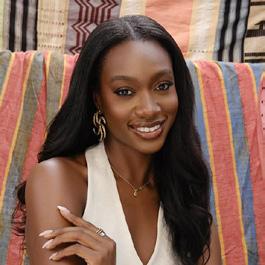
Authenticity and respect. The fabrics must reflect where they come from, the techniques must be honoured, and the stories behind them must be treated with care. For me, African fashion isn’t surfacelevel beauty; it’s identity, and I’ll never compromise that.
Cynthia Abila, Creative Director, Cynthia Abila Studios
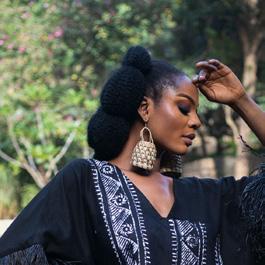
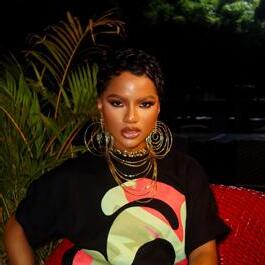
Integrity, originality, and respect for heritage. African fashion should not be reduced to trends or stereotypes; it must be approached with reverence, innovation, and honesty. We will never compromise on cultural depth, on fair acknowledgement of artisanship, or on authenticity in the stories we tell through fabric. For me, African fashion must remain true to its roots while confidently taking its seat at the global table.
Nonye Udeogu (This Thing Called Fashion), Founder, WhatNayLikes
Cultural integrity and authenticity. Trends will come and go, but respect for our heritage and the originality of our work must always remain.

Nkwo Onwuka, Creative Director, NKWO
In the fashion space where inspiration has no borders, our culture and traditions are what will set us apart from any form of appropriation. African cultural heritage is so diverse and dynamic, and was once deeply ingrained in our whole lives. Many of our traditions remain largely unexplored and are vanishing; we need to reawaken, harness, and tailor them towards our continued development in the fashion industry and the continent as a whole.
Ejiro Amos-Tafiri, Founder & Creative Director, Ejiro Amos Tafiri
Authenticity and excellence. I believe African fashion must always be true to its roots and must be executed with the highest standards of craftsmanship. Most importantly, it must uplift the people and cultures it draws inspiration from. Those values are non-negotiable for me.
